Product and Service Innovation
Mar 02, 2024
By Ari Manor , CEO at ZOOZ

This is one in a series of articles that provide detailed and updated information about Innovation.In this specific article, which focuses on Product and Service Innovation, you can read about:
- New Product Development (NPD)
- New Service Development
- Product Innovation VS Service Innovation
- Systematic Inventive Thinking (SIT) in product innovation
- Agile Development
- Design Thinking
- Innovation to Market
- Brand Extension
- Innovation without Competition
- Innovation Adoption Curve
- Innovations by Henry Ford
- 3M, the Innovation Company
- Innovation with plastic bottles
- Innovations at Body Shop
- Innovations in Dentistry
- Innovation at Aetna
- Innovations at Boots
- Innovations for Kitchen and Bath
- Innovation Week
For additional articles about Innovation, see the Topic Menu.

New Product Development (NPD)
New Product Development (NPD) is the backbone of innovation that keeps businesses relevant in a rapidly shifting marketplace. It’s a meticulous process that blends creativity with strategic planning, leading to the birth of products that are not merely new but necessary. By systematically addressing unmet needs and emerging trends, NPD ensures that companies not only adapt to market changes but also shape consumer preferences and expectations, securing a competitive edge in their industries.
Following is a closer look at the key stages of NPD.
Key Stages of New Product Development
- Idea Generation: The ideation phase is a brainstorming powerhouse where businesses generate a wealth of ideas. Idea generation is typically conducted once a year, in a specific quarter (A Unilever tradition which expended across many companies and industries), or ongoing, on a monthly basis. It can be carried out by a dedicated think tank or by utilizing crowdsourcing and involving all employees. Thinking tools such as SIT, SCAMPER, or Brainwriting can enhance the flow and the scope of ideas. Generated ideas can be collected into an Idea Bank, for the screening phase and beyond.
- 3M, known for its culture of innovation, encourages employees to spend 15% of their time generating new ideas, which has led to over 60,000 products in the market. Many of their products tend to be new to the world, and some incorporate new materials and technologies. After leading some innovation and marketing sessions with 3M a few years ago, we can testify that innovation is indeed still embedded in their DNA.
Case Study: Moment - High-Quality Phone Lenses
- Product: Moment (Launched 2014)
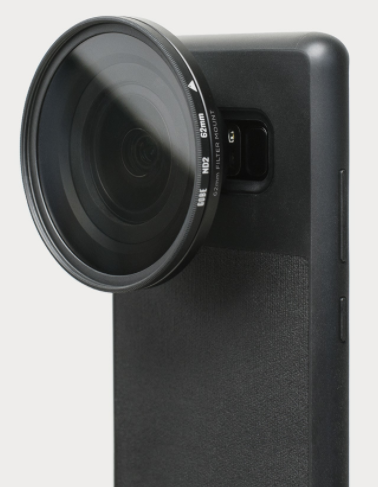
- What Was Done: Moment, a small Seattle-based company founded by a group of designers and photographers, developed a series of high-quality lenses for smartphones, enabling users to take professional-grade photos without the need for a traditional camera.
- Results/Impact: Moment has successfully filled a niche in the mobile photography market, appealing to photography enthusiasts who seek professional-quality images from their smartphones. Their products have been well-received, with a growing community of users and contributors, and have inspired smartphone users to push the boundaries of mobile photography.
- Success Factors: Moment's founders, leveraging their background in design and photography, recognized a gap in the market for high-quality photography accessible through smartphones. This insight came from understanding that while smartphones were increasingly used for photography, the quality of images couldn't match that of professional cameras due to the limitations of built-in lenses. In addition, the rise of social media and content creation created a demand for professional-grade photography without the bulk and expense of traditional cameras. Moment tapped into this trend, and the idea generation process led to the development of attachable lenses for smartphones, a novel solution that bridged the gap between smartphone and professional photography. They then engaged with a community of photography enthusiasts, gathering feedback and iterating on their product design. This ongoing interaction ensured that their lenses met the evolving needs of their users, enhancing product appeal and usability. Later on, the success of their products in filling a niche in mobile photography not only demonstrated the viability of the idea but also spurred further innovation, leading to the development of additional accessories and apps to complement their lens offerings. All-in-all, Moment’s success story underscores the importance of a well-executed idea generation and validation process in NPD.
- Idea Screening: This is where ideas are sieved through the lens of feasibility and market potential. Ideas can be managed in an Idea bank, in which each idea can be explained (or developed into a concept), ranked, and advanced as decided, following internal screening by a dedicated innovation committee, and external screening (for example via focus groups or concept testing). Each idea can be advanced or aborted, and if advanced the progress can be supervised by the committee, with one of the committee members in charge managing the progress, even if not directly performing the required step. Idea status is mentioned in the idea bank, and can typically be one of the following status types:
- No-go - with a written explanation why it was declined, to avoid “re-inventing a broken wheel”
- Check – some inquiries must be done before further progress is feasible (e.g. – regulation issues, cost estimates and availability of some related components, infringements of patents, etc.)
- Define – the concept must be sharpened before further testing (initial features, costs, sizes, etc.)
- Concept Testing - or other types of external screening should be done to validate the idea
- Go – the idea was approved by the committee and is sent to the relevant product manager to develop
- Unique idea status types include:
- Promotion – the idea is sent to the marketing communications manager, as it is only a promotional idea
- Disruption – the idea is sent to an isolated extreme innovation team, or becomes a spin-off, since it is too innovative to survive the normal organization channels.
Case Study: Amazon's 'Working Backwards' Approach to Innovation
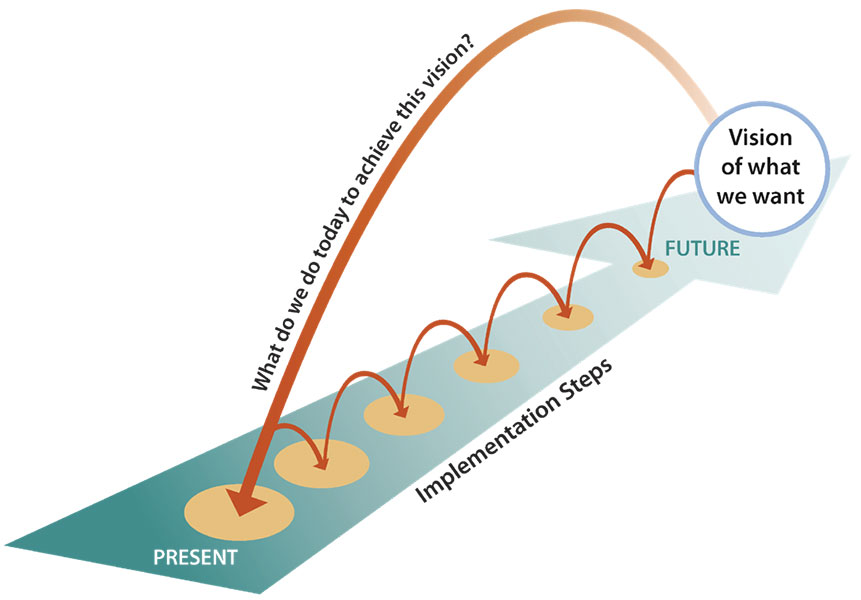
- Organization: Amazon Inc., Seattle, WA, USA ('Working Backwards' Approach Ongoing since the early 2000s)
- What Was Done: Amazon implements a 'working backwards' approach to product development and innovation. This method begins with identifying customer needs and desires before designing any product or service. The process starts with the drafting of a hypothetical press release and FAQ announcing the finished product, focusing on customer benefits. This customer-centric approach ensures that the development team keeps the end user's needs at the forefront throughout the product development process, from conceptualization to launch. Ideas that do not directly address or enhance the customer experience are refined or discarded, ensuring resources are focused on initiatives that offer tangible value to customers.
- Results/Impact: Amazon's 'working backwards' approach has been central to its ability to consistently introduce successful products and services that resonate with consumers. Notable successes include the Amazon Kindle, which transformed the e-reading experience, and Amazon Web Services (AWS), which democratized access to cloud computing technologies. By starting with the customer and working back through the technology, Amazon has not only fostered a culture of customer obsession but has also streamlined its innovation process, minimizing wasted effort on projects less likely to meet customer needs. This strategy has contributed significantly to Amazon's position as a global leader in e-commerce and technology, driving sustained growth and maintaining its competitive edge in a rapidly evolving market landscape.
- A/B testing: Beyond its "working backwards" strategy, Amazon extensively employs A/B testing—comparing two versions to identify the better performer—across its platform. This approach is applied to variations in product recommendations, page layouts, search algorithms, and even the phrasing on buttons and links. Amazon’s A/B testing is not an occasional effort but a continuous cycle of experimentation, learning, and optimization. The company relentlessly pursues new ideas, gathering data on how different variations influence user behavior and preferences. To conduct these A/B tests effectively, Amazon has developed sophisticated tools and platforms, enabling the company to manage multiple experiments concurrently, analyze results in real time, and swiftly apply successful alterations. This methodology allows Amazon to make data-driven decisions that progressively enhance the user experience. Effective external screening plays a major role in Amazon's unmatched retail success.
- Concept Development and Testing: Ideas evolve into concrete concepts, which are then tested. This phase not only completes the internal screening but also provides important insights on how to fine-tune the original concept and determines whether it makes sense to proceed further with this concept. To ensure the effectiveness of this phase, engaging with potential users or customers for feedback can be invaluable. This direct input can highlight unforeseen issues or new opportunities, enhancing the concept's market viability. Additionally, leveraging quantitative methods such as surveys or data analytics can offer a broader perspective on the concept's potential success, guiding strategic decisions with empirical evidence.
- LEGO, for instance, has a ‘LEGO Ideas’ platform where over 1 million members contribute ideas, and concepts that receive 10,000 public votes are reviewed for production.
- Business Analysis: This stage involves assessing the business viability of the concept. It includes a detailed evaluation of the concept's market potential, cost implications, revenue projections, and competitive landscape. Practical steps should include conducting a SWOT analysis (Strengths, Weaknesses, Opportunities, Threats) to understand internal and external factors that could impact the project's success. Additionally, developing a break-even analysis can help determine the time and conditions under which the concept is expected to become profitable, guiding investment decisions with a clear financial perspective.
- Kickstarter campaigns often serve as a form of business analysis, where the number of backers and funds raised validate a product's market demand before full-scale production.
- Product Development: This technical phase is where a concept materializes into a prototype. It involves detailed design work, engineering, and the development of a functional model or service framework that can be tested in real-world conditions. Technical problem-solving skills are often required in order to overcome design, functionality, stability and cost issues, and methodologies such as TRIZ and SIT for Problem-Solving can help. To add value, it's crucial to incorporate iterative feedback loops with potential users during this phase, allowing for adjustments based on user experience and functionality feedback. Additionally, aligning the prototype development with lean principles can help minimize waste and ensure that resources are focused on features that deliver the most value to the end user.
- Dyson famously created 5,127 prototypes of its first vacuum cleaner, demonstrating the exhaustive nature of developing a product that truly innovates.
- Market Testing: Prototypes are tested to see how the product fares in a controlled release. This stage is critical for gathering real-world data on product performance, usability, and market acceptance. Options such as beta testing with a select group of users, pilot programs within targeted environments, or limited market launches can provide invaluable insights. These approaches allow for the collection of feedback under actual usage conditions, enabling further refinement before a full-scale launch. Employing these strategies not only helps in identifying and addressing potential issues early but also engages potential customers, building anticipation and interest in the product.
- For instance, Google often releases beta versions of products to a test market, collecting data from thousands of users to refine the product.
- Commercialization: If market testing is successful, the product is finalized for launch. This involves making any necessary adjustments based on feedback received during testing to ensure the product meets customer expectations and market standards. Final preparations also include solidifying the marketing strategy, distribution channels, and support infrastructure to ensure a smooth market entry. It's essential at this stage to have a clear plan for scaling production to meet anticipated demand and to establish metrics for monitoring post-launch performance, enabling swift responses to market feedback and competitive pressures. This careful culmination of preparatory work sets the foundation for a product's success in the marketplace.
- Apple’s iPhone, now in its 13th generation, continues to see successful launches, with the iPhone 12 series reportedly shipping over 100 million units within seven months of its launch.
Case Study: Echo - Smart Innovation in Home Audio
- Product: Echo by Amazon (launched at 2014)
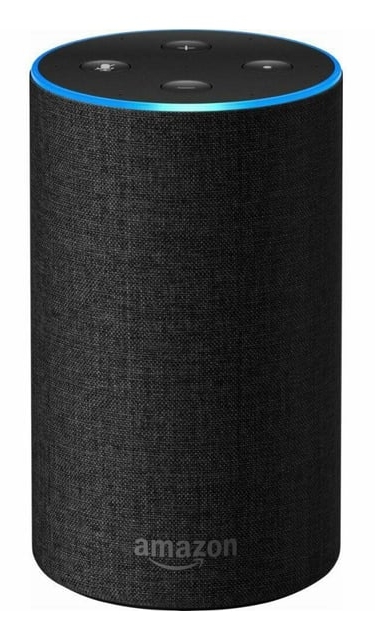
- What Was Done: Amazon developed the Amazon Echo, a line of smart speakers that integrates with the voice-controlled intelligent personal assistant service Alexa. The product was designed to be interactive, providing voice responses, music playback, setting alarms, streaming podcasts, and providing real-time information such as news and weather.
- Results/Impact: The Echo line of products has become a significant player in the smart home industry, changing the way consumers interact with their home systems. It has also opened up new avenues for smart home product developers and spurred the growth of voice-operated devices.
- Success Factors: Amazon capitalized on its technological expertise and existing infrastructure to integrate Echo with the Alexa Voice Service, creating a seamless user experience that sets a new standard for voice-activated devices. This strategic use of voice recognition technology addressed a growing consumer desire for hands-free, conversational interactions with technology, making smart home devices more accessible and intuitive. Additionally, Amazon's decision to open the Alexa platform to third-party developers early on catalyzed a broad ecosystem of compatible devices and applications, enhancing Echo's utility and appeal. And during the launching, Amazon's robust marketing and distribution capabilities also played a critical role, ensuring widespread visibility and availability of Echo devices. Furthermore, Amazon's commitment to continuously improving Alexa's functionality through software updates has kept users engaged and helped maintain Echo's position as a leader in the smart home market. By prioritizing user experience, leveraging network effects, and employing a dynamic approach to product enhancement, Amazon has not only succeeded in establishing Echo as a pivotal smart home device but also in shaping the future of home automation.
- Post-Launch Review and Perfecting: Post-launch, the product's market performance is meticulously analyzed for further refinement. This evaluation encompasses sales data, customer feedback, and market reception to identify areas for improvement or expansion. Utilizing tools like customer satisfaction surveys and social media sentiment analysis can offer deep insights into the product's strengths and weaknesses from the user's perspective. Additionally, monitoring competitor responses and market trends during this phase is crucial for maintaining the product's competitive edge and adapting to shifts in consumer preferences. This strategic analysis informs ongoing product development, ensuring the offering remains relevant and continues to meet customer needs effectively.
- Samsung’s initial release of the Galaxy Fold faced challenges, but after review and redesign, Samsung reported selling 1 million units of the improved version.
In every stage of NPD, the infusion of quantitative data is critical. Whether it's measuring the market response to a prototype or analyzing post-launch sales, the numbers guide the iterative process of innovation. Businesses that master the art of NPD, like 3M, LEGO, and Apple, not only bring forth products that captivate the market but also establish benchmarks for the industry.
In the orchestra of NPD, each section – from ideation to market testing – must play in harmony, guided by a conductor who understands the rhythm of the market and the tempo of technology. It's this symphony of strategic actions, supported by empirical data, which transforms a concept into a product that can proudly bear the label "innovation."

New Service Development
In a world where service-based economies are rapidly expanding, New Service Development (NSD) has become crucial for businesses seeking growth and differentiation. NSD involves introducing new service offerings or significantly improving existing services. This process is marked by its own set of complexities, as services are intangible, making their development and evaluation a nuanced endeavor.
Key Phases in New Service Development
- Service Strategy Development: Aligning the new service with the company's overall strategic objectives is vital.
- For example, Netflix's venture into streaming services was a strategic move that capitalized on changing consumer behaviors, resulting in over 200 million subscribers as of 2021.
- For example, Netflix's venture into streaming services was a strategic move that capitalized on changing consumer behaviors, resulting in over 200 million subscribers as of 2021.
- Service Design and Testing: Designing the service blueprint and testing it to ensure feasibility and customer value.
- Starbucks constantly designs and tests its café experiences, focusing on ambiance, efficiency, and customer engagement. By doing so, it contributes to its global brand loyalty and recognition.
Case Study: Service Blueprints at Ritz-Carlton
- Organization: The Ritz-Carlton's Gold Standard Services (Implementation ongoing since the early 1990s)

- What Was Done: The Ritz-Carlton implemented "service blueprints" as a strategic tool to map out every aspect of the guest experience, from pre-arrival to post-departure. This detailed mapping allowed the company to identify critical service interactions and opportunities for personalization, ensuring that every guest encounter upheld the brand's gold standard of service. The service blueprints detailed not only the direct interactions between staff and guests but also the behind-the-scenes processes that support those experiences.
- Results/Impact: The adoption of service blueprints significantly contributed to The Ritz-Carlton's reputation for exceptional service quality, culminating in the brand earning two Malcolm Baldrige National Quality Awards. By thoroughly designing and consistently delivering exceptional service experiences, The Ritz-Carlton not only enhanced customer satisfaction and loyalty but also set a benchmark in the luxury hospitality industry. The brand's commitment to service excellence, supported by the systematic use of service blueprints, solidified its status as a leader in creating memorable and personalized guest experiences.
- Service Analysis: This involves assessing the service's business potential and market fit.
- o FedEx continuously analyzes delivery routes and customer data, optimizing their service offerings to handle an average of 3.4 million shipments each business day.
- o FedEx continuously analyzes delivery routes and customer data, optimizing their service offerings to handle an average of 3.4 million shipments each business day.
- Market Testing: Similar to product testing but focused on customer experience and satisfaction.
- For instance, Airbnb often pilots new service features, like "Experiences", in select markets, gauging customer response before a wider rollout.
- For instance, Airbnb often pilots new service features, like "Experiences", in select markets, gauging customer response before a wider rollout.
- Commercialization and Launch: Similar to product testing but focused on customer experience and satisfaction.
- OpenAI launched GPT-3 in June 2020, surpassing 1 Million users in just 5 days, and gaining 57 million users in its first month, demonstrating rapid and successful service commercialization.
- OpenAI launched GPT-3 in June 2020, surpassing 1 Million users in just 5 days, and gaining 57 million users in its first month, demonstrating rapid and successful service commercialization.
- Post-Launch Service Monitoring: Evaluating the service performance and making necessary adjustments.
- Spotify’s “Release Radar” is a result of continuous post-launch monitoring, offering personalized playlists that improve customer retention.
Case Study: LegalZoom – Subscription-based Legal Plan
- Service: Subscription-based Legal Plan by LegalZoom (Launched 2011)

- What Was Done: LegalZoom, based in Glendale, California, USA, and known for providing online legal documents, developed a subscription-based service offering ongoing legal advice for a monthly fee. The service connects subscribers with licensed attorneys for consultations on new legal matters, contract reviews, and legal advice.
- Results/Impact: TLegalZoom's Legal Plan has made legal services more accessible and affordable for small businesses and individuals, disrupting the traditional model of legal consultations and billing. It has provided an avenue for startups and small businesses to obtain legal services that were previously cost-prohibitive.
Components that Drive Successful New Service Development
- Customer Involvement: Integrating customer feedback early and often throughout the NSD process.
- Zappos, with its 365-day return policy and emphasis on customer service, has maintained high customer loyalty and satisfaction rates.
Eat Your Cake! - Chef Services Tailored to Dietary Needs
- Organization: Eat Your Cake!, Vancouver, Canada (launched at 2015)

- What Was Done: Eat Your Cake! developed a personalized chef service that creates and delivers meal plans based on individual dietary needs and preferences. This service includes nutrition consultation, customized meal planning, grocery shopping, in-home meal preparation, and kitchen cleanup.
- Results/Impact: The service has garnered a dedicated customer base, particularly among health-conscious individuals and those with specific dietary restrictions. It has also expanded its offerings to include corporate wellness programs, thereby broadening its market reach and impact.
- Employee Training: Ensuring that staff are equipped to deliver the new service effectively.
- Starbucks invests heavily in employee training, which has led to consistent service quality across its 32,000 stores worldwide.
- Technology Utilization: Leveraging technology to enhance the service experience.
- Domino's Pizza's use of tech for services like GPS tracking has led to a significant increase in delivery sales, contributing to a 21% U.S. sales growth in Q3 2020.
- Service Differentiation: Offering something unique that sets the service apart.
- Uber’s entry into the ride-sharing market disrupted traditional taxi services by offering convenience and pricing transparency.
Case Study: Hertz CLEAR - Streamlining Car Rentals with Mobile Technology
- Service: CLEAR technology by Hertz (Implemented in 2019)

- What Was Done: Hertz introduced the Hertz Fast Lane powered by CLEAR, which uses biometrics to speed up the car rental process. By integrating CLEAR's technology, customers can now bypass the counter and pick up their rental car through a seamless identity verification process using facial recognition or fingerprint scanning
- Results/Impact: The service has significantly reduced the time it takes for customers to get on the road, enhancing customer satisfaction. It has also positioned Hertz as an innovator in the car rental industry, utilizing technology to improve efficiency and user experience
- Scalability and Flexibility: Designing services that can grow and adapt.
- Scalability is a major screening criterion for new concepts at Google. Local teams, including those we had the pleasure of working with on regional marketing plans, focus on developing and testing concepts that have the potential to scale and succeed globally.
Case Study: Zipcar - Car Sharing
- Service: Car-sharing by Zipcar, Cambridge, Massachusetts, USA (Launched 2000)

- What Was Done: Zipcar introduced a car-sharing service that allows members to rent cars by the hour or day. The service is accessible via an app, which handles the entire process, from vehicle selection to unlocking the car. Zipcar positioned its service as an alternative to traditional car ownership or rental.
- Results/Impact: Zipcar's service has reshaped urban mobility and is considered a pioneer of the sharing economy. It has expanded to numerous cities and countries, offering an eco-friendly transportation alternative and reducing the need for personal vehicle ownership.
Quantitative Impact of Effective New Service Development (NSD)
- The quantifiable impact of effective NSD is clear. Companies like Amazon and Netflix have seen their market capitalization soar as they’ve innovated in service offerings
- For instance, Netflix's investment in original content has led to a reported 31% increase in annual revenue from 2019 to 2020.
- On a smaller scale, innovative service models like Rent the Runway have disrupted retail by offering a subscription-based clothing rental service, hitting nearly $157 million in revenue in 2019 before the pandemic.
NSD is about crafting experiences and solutions that resonate with consumers. It's a process that requires meticulous planning, customer insight, and the agility to adapt to feedback and changing market conditions. As services become increasingly central to global economies, the ability to innovate in service offerings will become a primary differentiator and driver of success for businesses worldwide
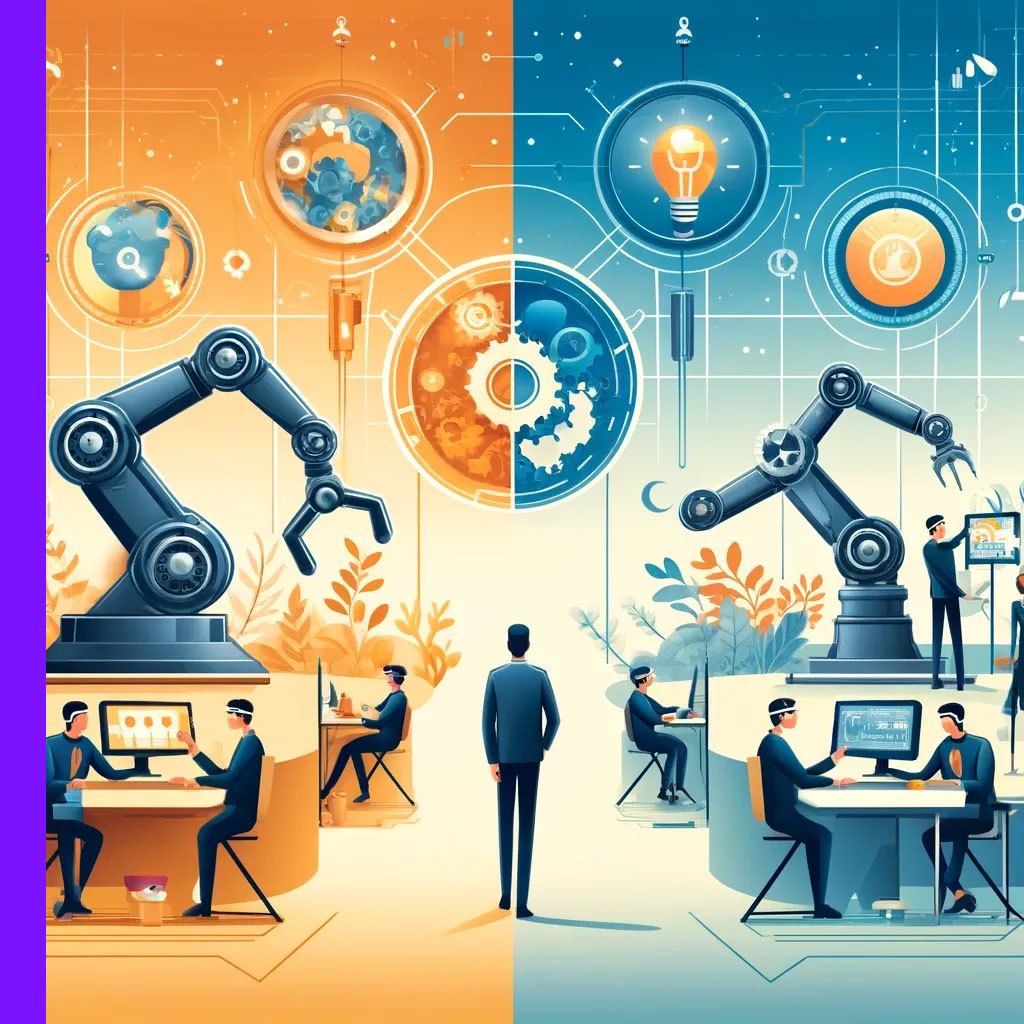
Product Innovation VS Service Innovation
The business landscape is characterized by two primary forms of innovation: product innovation and service innovation. Both are critical to economic growth and competitiveness, but they diverge in approach, execution, and the nature of their outputs.
Comparative Analysis of Product and Service Innovation
- Tangibility: Product innovation results in tangible offerings—physical goods that consumers can touch and own. Service innovation, on the other hand, is intangible, often experienced as a utility or activity.
Case Study: Dyson's Air Multiplier – Bladeless fans
- Product: Air Multiplier by Dyson Ltd, Malmesbury, England, UK (Introduced 2009)
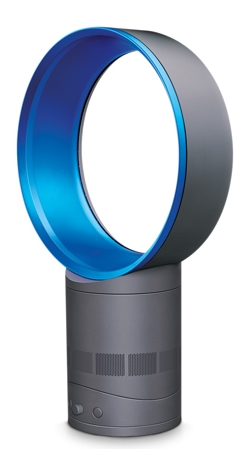
- What Was Done: Dyson revolutionized the fan market with its Air Multiplier technology. By removing the blades traditionally used in fans, Dyson created a product that was safer, quieter, and more energy-efficient, using an annular aperture to draw in air and amplify it.
- Results/Impact: The bladeless fan was not just a new product but a significant innovation in its category. It set new standards for safety and design aesthetics in home appliances and allowed Dyson to command a premium price, thus impacting the market with a distinctive value proposition.
- Product: Air Multiplier by Dyson Ltd, Malmesbury, England, UK (Introduced 2009)
- Customer Interaction: Products are typically developed and then marketed to customers, whereas service innovation often involves the customer in the development process itself, as the feedback loop is immediate and can directly influence the service improvement.
- Speed of Implementation: Product innovation can have longer development cycles due to manufacturing and distribution requirements. Services, by contrast, can often be innovated more rapidly due to the direct nature of delivery.
- Protection and Scale: Product innovations can be patented, protecting the innovation and potentially creating a monopoly. Service innovations are harder to protect and are often quickly imitated, which can drive rapid industry-wide improvements.
- Measurement of Success: The success of product innovation can be measured in sales, market share, and product lifecycle. Service innovation is often evaluated on customer satisfaction, retention rates, and the efficiency of service delivery.
Case Study: Spotify's Streaming Service
 Service Mix: Music Streaming by Spotify AB, Stockholm, Sweden (Launched 2008)
Service Mix: Music Streaming by Spotify AB, Stockholm, Sweden (Launched 2008)- What Was Done: Spotify introduced a music streaming service that allowed users to listen to music on-demand, create playlists, and discover new music through an internet connection, without the need to purchase or download individual tracks or albums.
- Results/Impact: Spotify's service innovation reshaped the music industry, transitioning the revenue model from unit sales to subscriptions and advertising. It has grown to become one of the largest streaming platforms, influencing how music is distributed, monetized, and consumed globally.
Examples Demonstrating the Dichotomy
- Product - Apple Inc.: Apple's launch of the iPhone revolutionized the mobile phone market with its touch screen technology and app ecosystem, with over 217 million iPhones sold in 2018 alone.
- Service - Uber: Uber's innovation in creating a ride-hailing service that leverages technology to connect drivers with passengers disrupted the transportation industry, with 5 billion trips completed in 2017.
- Comparison: The comparison between Apple's sale of 217 million iPhones in 2018 and Uber's completion of 5 billion (= 5,000 Million) trips in 2017 illustrates the potential for online service platforms to scale and reach a wider audience more rapidly than physical products. In other words, Uber provided 23 times more trips (services) in one year compared to iPhone sales (products), achieving this a year before Apple sold 217 million iPhones. This disparity underscores how digital services, like Uber's app-based ride-hailing, can achieve exponential growth and widespread adoption at a pace that physical goods, even those as popular as the iPhone, cannot match.
Key Strategies for Successful Innovation in Both Domains
- Understanding Market Needs: Whether developing a product or a service, successful innovation begins with a deep understanding of market needs and consumer pain points.
- Leveraging Technology: The integration of advanced technology can lead to breakthrough innovations in both products and services, as seen with Tesla's electric vehicles or Zoom's video conferencing services during the pandemic.
- Building a Strong Brand: A strong brand can enhance both product and service innovations, particularly in B2C (Business to Consumer) brands, creating an emotional connection with consumers and differentiating from competitors.
Case Study: Peloton - Interactive Fitness
- Solution: Integrated Fitness Experience by Peloton, New York, USA (Launched 2012)

- Product-Service Mix: Peloton combines high-quality exercise equipment (stationary bicycles and treadmills) with an integrated digital streaming service (on-demand fitness classes). This special mix allows users to participate in live and on-demand fitness classes from the comfort of their homes.
- What Was Done: Peloton launched its innovative product-service mix by introducing a stationary exercise bike equipped with a screen that streams live and on-demand fitness classes. Members pay a monthly subscription fee to access a wide range of classes, including cycling, running, yoga, and more. The platform encourages community engagement through features like leaderboards and real-time performance tracking.
- Results/Impact: Peloton's approach has revolutionized home fitness, making it a successful case of launching a combined product and service. It has not only sold millions of bikes and treadmills but also built a loyal community of users. Peloton's success lies in its ability to merge high-quality, durable physical products with an engaging and diverse content library, thereby creating a comprehensive and immersive fitness experience. This unique combination has led to significant growth in subscribers and revenue, establishing Peloton as a leader in the fitness industry and a pioneer in the integrated product-service model.
Quantitative Impacts
- Product Impact: Tesla's innovation in electric vehicles has not only disrupted the automotive industry but also led to a staggering market cap. “By April 2021, Tesla had become the most valuable car manufacturer globally, surpassing traditional giants such as Toyota and Volkswagen. Its market capitalization exceeded $800 billion, underscoring the industry's recognition of Tesla's pioneering efforts in electric vehicle technology.”
- Service Impact: Netflix’s shift from DVD rentals to streaming services has yielded over 203 million subscribers by the end of 2020, reflecting the massive impact of service innovation on growth and market dominance. This exponential subscriber growth has significantly contributed to Netflix's revenue, which soared to over $25 billion in 2020, demonstrating the financial success and market penetration achieved through its streaming service model
In essence, both product and service innovations are vital for businesses to thrive. Product innovation focuses on creating new or improved goods, while service innovation enhances the way services are conceived, delivered, and consumed. Each requires a unique set of strategies, processes, and measurements of success, and businesses often find that a balanced focus on both can lead to greater innovation, customer loyalty, and long-term profitability.

Systematic Inventive Thinking (SIT) in product innovation
Systematic Inventive Thinking (SIT) is a method of innovation that imposes constraints via thinking tools and framework, to foster creativity, rather than relying on spontaneous, free-form brainstorming. It's a structured approach that revolves around thinking inside the box, encouraging innovators to find new solutions with existing resources.
Why Use SIT for Idea Generation?
- Prediction Power: The most significant advantage of SIT is its ability to predict over 80% of all possible innovations in a given product or service category, whereas other ideation methods provide only 10% (brainstorming) or 30% (SCAMPER) of future innovation coverage. The seemingly impossible prediction power of SIT stems from the six thinking tools based on six common innovation patterns typical to almost all product or service inventions. Therefore, using these patterns systematically yields almost all possible future inventions.
- Quality of Ideas: Another significant advantage of SIT is the quality of the ideas generated. The majority of SIT-generated ideas are feasible and at reasonable costs since they directly derive from and introduce changes to the current components and variables of the product or service (inside-the-box). In contrast, other ideation methods, like brainstorming, postpone judgment and often focus outside-the-box, resulting in many poor quality and non-feasible ideas, with only a few good ideas (out of many that may exist).
- Time Worth Invested: Learning and then applying SIT for new product development requires more hours compared to brainstorming or SCAMPER, but the effort is worthwhile in order to develop an idea bank that includes the majority of future breakthroughs in a given product or service category.
Case Study: Kapro - Systematic Innovation in Precision Tools
- Company: Kapro Industries, Kadarim, Israel (Established 1974 and renamed Kapro at 1990)
- What Was Done: Kapro hosted a 4-day in-house workshop focusing on Systematic Inventive Thinking (SIT) methodologies, and facilitated by Ari Manor, our CEO at ZOOZ consulting. The workshop aimed to envision future innovations in the spirit levels category. The team generated a portfolio of 73 innovative ideas for new spirit level products, utilizing SIT principles to forecast and create future product concepts.
- Key Innovatios:
- Shark: A hardened plastic shock-absorbent level capable of withstanding hammer strikes to straighten paving stones and building blocks without compromising its accuracy and calibration.
- TopGrade: A gradient level featuring vials set at 0%, 1%, and 2% slopes, catering to precise measurement needs, and available in a 40" version with additional 0.5% and 1.5% settings.
- PosTrite: A magnetic hinged level designed for posts, pipes, and signs, adjustable to any angle with click-locks every 15 degrees and foldable for compact storage.

- SET & MATCH® System: An aluminum ruler that includes two cylindrical sliding vials for both horizontal and vertical measurements, presenting a new-to-the-world precision tool category.
- Results/Impact: Kapro's foresight and innovative output preempted market trends, with many of the 73 proposed ideas coming to fruition in the marketplace over the following years. This proactive approach to product development has solidified Kapro's position as a leader in the measuring tools sector, contributing to a tenfold increase in revenues and profits within a few years.
- Implementation: In the years following the workshop, Kapro expanded the use of SIT methodologies across other product lines, including rulers, measuring tapes, rafter squares, and laser levels. Some initiatives were led by our facilitators, externally, while others were managed internally by Kapro's Innovation Manager. The successful transfer of SIT knowledge and skills to Kapro's team, enabling them to independently innovate using SIT tools, stands as a testament to the program's success.
- Conclusion: Kapro's strategic use of Systematic Inventive Thinking not only predicted but actively shaped the future of measuring tools, demonstrating the profound prediction power of SIT tools. When we asked Kapro’s CEO, Paul Steiner, 10 years after the initial Systematic Innovation process, how many new level inventions launched by competitors have surprised him during that period, his answer was plain and simple: “None!”.
In addition, using SIT, Kapro has not only enhanced its product offerings but has also institutionalized a sustainable model of continuous innovation, ensuring its competitive edge and relevance in the fast-evolving global market. Kapro is nowadays regarded as a leading brand in precision tools, and major retailers like Walmart, Home Depot, and Lowe's include it in their display, and regard it as a “must-have brand, which attracts shoppers looking for precision tools to the store.”
SIT Principles for New Product Development (NPD)
- Subtraction/Reduction: Removing a product component (and its role) - previously considered essential to the product. Then – finding benefits for this “reduced” product.
- Bicycles without pedals (Balance bikes) enable young children to experience their first bike rides, focusing on balance and coordination, fostering early development of stability, steering, and using (hand) breaks skills.
- Bicycles without pedals (Balance bikes) enable young children to experience their first bike rides, focusing on balance and coordination, fostering early development of stability, steering, and using (hand) breaks skills.
- Multiplication/Duplication: Adding more copies of a product component - as is, or changing it in some way. Then, finding benefits for this new design that includes extra copies of specific components.
- Gillette’s addition of multiple blades to their razors revolutionized shaving experience and has maintained market leadership with a 47.3% share in the U.S. as of 2020.
Case Study: Febreze by Procter & Gamble's - Reinvented

- Organization: Procter & Gamble, Cincinnati, Ohio, USA (Febreze Reinvention in 2012)
- What Was Done: Utilizing SIT principles, P&G reimagined Febreze from being a product that simply eliminated odors to one that also adds a pleasant scent to fabrics. The SIT method helped the team think differently about the product's use, leading to the creation of Febreze as a dual-action product.
- Results/Impact: The reinvention of Febreze not only increased its usability but also expanded its market by appealing to consumers interested in both cleanliness and ambiance. This led to a significant boost in sales and solidified Febreze's position as a leading product in its category.
- Task Unification/Unification: Assigning additional tasks to an existing element, often to replace another component that performs this task and can then be eliminated. Unlike “Subtraction,” here the role is kept.
- Kinetic watches, utilizing hand movement to replace spring-power, have revolutionized the watch industry by reducing the reliance on traditional winding mechanisms.
Case Study: Applying SIT at Skunk Works Division, Lockheed Martin
- Organization: Lockheed Martin, Bethesda, Maryland, USA (Skunk Works Division founded in 1943)

- What Was Done: Lockheed Martin's Skunk Works division applied principles akin to SIT, focusing on taking existing technologies and using them in novel ways to develop advanced aircraft. Their approach involved setting constraints to drive creativity and innovation within the aerospace sector.
- Results/Impact: The Skunk Works team has been responsible for several revolutionary aircraft designs, including the U-2, SR-71 Blackbird, and F-117 Nighthawk. By applying SIT principles, they developed technologies that significantly advanced the capabilities of military and reconnaissance aircraft, maintaining Lockheed Martin's position at the forefront of aerospace innovation.
- Attribute Dependency / or “Adding a Dimension”: Creating a new dependency (or changing or eliminating an existing dependency) between a pair of variables (out of which, one at least should be related to the product).
- Transition lenses in eyewear adjust their tint based on light exposure, a product innovation that has seen increasing adoption with the global eyewear market size reaching USD 138.7 billion in 2019.
Note: in this example, the variables are the darkness of the lenses of the eyewear (a product, or internal, variable), and the light intensity of the surroundings (an environment, or external, variable)
- Transition lenses in eyewear adjust their tint based on light exposure, a product innovation that has seen increasing adoption with the global eyewear market size reaching USD 138.7 billion in 2019.
 Division/Distribution: Distributing components and resources of the product in a new way in the 3D space: divided, sliced, tilted, distorted, folded, rotated, reshaped, etc.
Division/Distribution: Distributing components and resources of the product in a new way in the 3D space: divided, sliced, tilted, distorted, folded, rotated, reshaped, etc.
- Ergonomic keyboards and mice, rearranging keys for natural hand posture and reshaping the mouse form, enhance comfort and reduce strain in the high-demand computing environment.
Case Study: Foldable Kayak by Oru
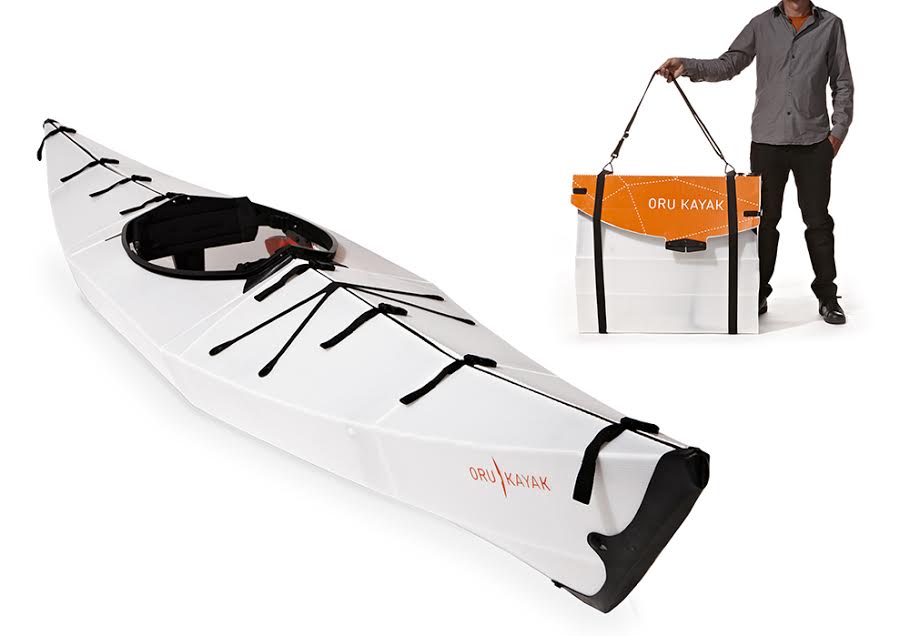
- Company: Oru Kayak, Emeryville, California, USA (First Launched 2012)
- What Was Done: Oru Kayak implemented SIT to create an original folding kayak inspired by the art of paper folding. This innovation allowed for easy transportation and storage, solving a significant pain point for urban dwellers and adventurers.
- Results/Impact: The foldable design disrupted the boating industry by offering unprecedented convenience. It attracted urban adventurers and travelers, expanded the kayaking market, and garnered significant investment and media attention, propelling the company into a new phase of growth.
- Adjustment to the Environment: Adjusting the product's interactions with environmental components – making negative interactions neutral, neutral interactions positive, and positive interactions known and amplified.
- Examples include:
- Round comers for children’s furniture (making negative interactions neutral)
- Self-retracted water hoses utilizing a water engine (making neutral interactions positive)
- Advertising that a sugar-free chewing gum reduces cavities (making positive interactions known)
- Adding “brushing granules” to the same sugar-free chewing gum amplifies bacteria removal
Case Study: Oxo Good Grips
- Company: Oxo, New York, USA (Good Grips line launched in 1990)

- Product line: Kitchen tools
- External component: Hands
- What Was Done: Oxo applied 'adjustment to the environment' pattern, to rethink the design of kitchen tools. They replaced the uncomfortable handles with a non-slip, ergonomic design that was easier to use, particularly for individuals with arthritis (which the wife of OXO’s founder suffered from).
- Results/Impact: Oxo's Good Grips line became a massive success, leading to the development of over 1,000 products with a focus on universal design. The brand has become synonymous with ergonomic household products that are both functional and accessible. Oxo now owns the biggest share of the kitchen tools market, and improves the user experience for people of all abilities worldwide.
- Examples include:
SIT Principles for New Product Development
The following Systematic Inventive Thinking (SIT) principles provide a structured framework for generating innovative ideas by systematically manipulating components, attributes, dependencies, and constraints within a defined problem space:
- Closed World: This principle suggests that innovation is often sparked within defined boundaries or constraints, “inside the box.” By working within existing limitations, individuals are prompted to find inventive solutions using available resources, fostering creativity and practicality.
The Closed World - in a Nutshell
- How to Apply the Closed World Principle
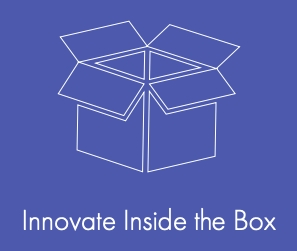
- Closed World Analysis is performed to identify the available resources: components and variables of a product and its immediate environment.
- The identified components and variables are then systematically manipulated with inventive thinking tools (e.g., multiplication of product components), yielding ideas for innovations.
- Advantages of Doing Closed World Analysis
- The resulting concepts for new or improved products are crafted from ingredients in the Closed World, which were always "under our nose" (within or around the product), thus creating a "how did we not think of it before?" effect.
- The more this effect is evident, the more experts rank the new concepts as highly innovative.
- In contrast, the further we depart from the Closed World (the product and its natural surroundings), the less inventive (and the less feasible) our concepts for innovation will become.
- For example: When inventing new cars, which ingredients are more promising to work with: (1) the engine, (2) the road, or (3) the trees near the car?
If you manage to do something new with the engine, the level of inventiveness will definitely be the highest; the road is second best, and the trees are far less promising as a source for inventiveness.
- For example: When inventing new cars, which ingredients are more promising to work with: (1) the engine, (2) the road, or (3) the trees near the car?
- How to Apply the Closed World Principle
- Function Follows Form: The Function Follows Form principle challenges the conventional product development approach by reversing the traditional “Form Follows Function” relationship between form and function.
- Instead of designing a product based on its intended functionality, innovators first introduce alterations to the product's physical attributes or form using SIT thinking tools. This process often yields unconventional or "monstrous" product configurations (forms).
- Subsequently, innovators explore potential functions or uses for these altered (and often bizarre) forms, leveraging the creativity sparked by the initial modifications.
- By prioritizing form over function in the ideation phase, Function Follows Form encourages inventive solutions that transcend conventional design constraints and foster innovation in product development.
Example: A Chair with Multiplied Seats
- Form Follows Function: Applying the traditional design principle, as follows:
- Chairs are intended for sitting (that’s their function), and their form should follow.
- Therefore, chairs are designed accordingly:
- With a surface to sit on (a seat)
- The seat is located in horizontal plane (for convenient sitting)
- The seat is located in the proper height for human beings (applying Ergonomics)
- This leads to a functional but nevertheless conventional design, similar to all other chairs.
- Function Follows Form: Applying SIT’s reverse principle, to evoke creativity, as follows:
- Inventive Thinking tools (in this case – multiplication) are applied to yield a new and often bizarre product form – a “monster” (in this case – a chair with two seats).

- This new design concept (a chair with two seats) is visualized, and various forms (locations for the additional seat) are conceived, in an attempt to find new functionality for users:
- A seat below a seat (a bizarre form) – may be useful for storage between the two seats (a function that follows this “monstrous” form)
- Side-by-side seats – for two people, for a child and adult (if the second seat is lower), etc.
- Back-to-back seats – For shoulder massage therapy? Can you think of other functions?
- This leads to various innovative ideas for new types of chairs with multiplications
- Multiplication is applied for other chair components (legs, back, etc.), and other inventive thinking tools are also applied, yielding dozens of additional concepts for unconventional chairs
- Inventive Thinking tools (in this case – multiplication) are applied to yield a new and often bizarre product form – a “monster” (in this case – a chair with two seats).
- Advantages: By prioritizing form over function in the ideation phase, Function Follows Form encourages inventive solutions that transcend conventional design constraints and foster innovation in product development.
- Constraints Increase Creativity: This principle highlights the paradoxical relationship between limitations and innovation. Rather than hindering creativity, well-defined constraints (for example, those embedded in thinking tools) serve as catalysts for generating inventive ideas and solutions. Constraints compel individuals to think resourcefully, fostering creativity and ingenuity in problem-solving endeavors.
- For instance, tasking two think tanks with creating innovative shoe designs but imposing specific constraints on one group (such as envisioning shoes without a sole for "reduction", with a partial sole for "partial reduction", or incorporating multiple soles for "multiplication") often results in the constrained group generating more original and innovative ideas.
- Path of Most Resistance: The Path of Most Resistance principle encourages innovation by tackling challenges or obstacles that defy conventional approaches. By choosing paths that appear more difficult or counterintuitive, individuals are pushed to think differently and explore unconventional solutions, leading to breakthrough innovations.
- For example, the path becomes tougher (more friction, more resistance) when moving from unification to partial reduction, and then to full reduction. A car on chains that replaces the wheels is easier to conceive than a car with only two wheels, and that in turn is easier to conceive than a car with no wheels at all (and no ability to move). Nevertheless, when we do manage to overcome the friction and find practical uses for full reductions (like in the balance pedal-less bikes), the level of inventiveness is higher.
- Note: This principle corresponds well with the previous principle – resistance is a constraint, and therefore, it increases creativity.
How to Apply Systematic Inventive Thinking for New Product Development
Incorporating Systematic Inventive Thinking (SIT) into the product innovation process can be highly beneficial for generating novel ideas and solutions. Here are steps to effectively integrate SIT into the innovation process:
- Training and Familiarization: Provide training sessions or workshops to familiarize team members with the principles and techniques of SIT. Ensure that everyone understands the various thinking tools and how they can be applied to generate innovative ideas.
- Identify Innovation Challenges: Choose product lines that you want to systematically improve and innovate. It is beneficial to start with one line that is a “cash cow” (for fast returns and maintaining leadership) and one that is a “rising star” (for significant future growth).
- Conduct Closed World Analysis: Perform a Closed World Analysis to define the components and variables of the product and its natural surroundings.
- Apply SIT Thinking Tools: Utilize all six SIT thinking tools to systematically manipulate the elements identified in the Closed World Analysis:
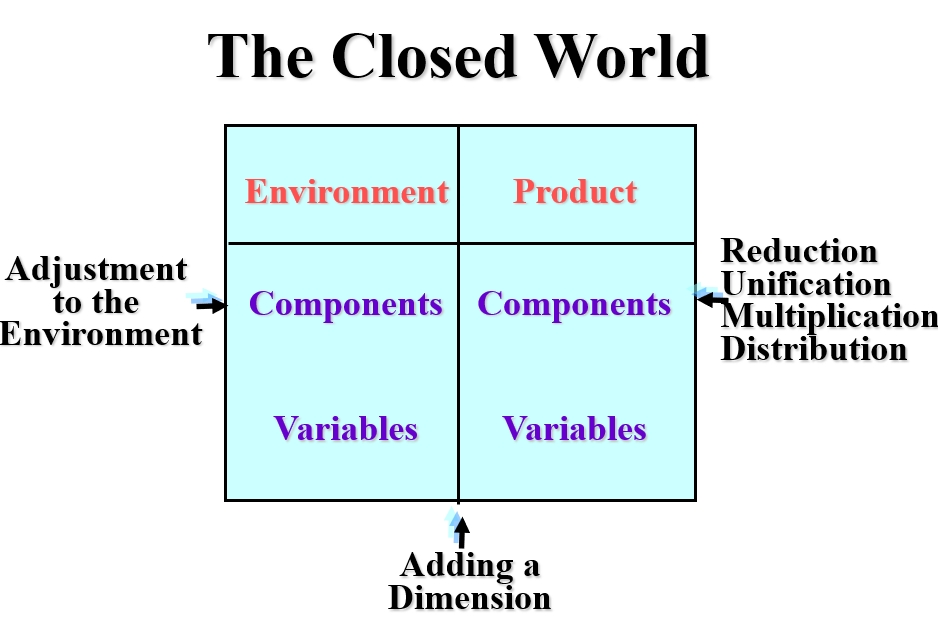
- On product components – apply “Multiplication,” “Division/Distribution,” “Subtraction/Reduction,” and “Task Unification/Unification.”
- On environment components – apply “Adjustment to the Environment”).”
- On pairs of variables (at least one of which should be related to the product) – apply “Attribute Dependency (also called – “Adding a Dimension”).”
- Generate Ideas and Concepts: Encourage team members to brainstorm and generate ideas based on the manipulated elements and SIT thinking tools. Encourage divergent thinking and the exploration of unconventional solutions that may arise from the application of SIT techniques.
- Evaluate and Refine Ideas: Evaluate the generated ideas based on criteria such as feasibility, desirability, and novelty. Select promising concepts for further development and refinement based on their potential to address the identified innovation challenges effectively.
- Prototype and Test: Create prototypes or mock-ups of the selected concepts to test their functionality, usability, and appeal. Gather feedback from stakeholders and end-users to iteratively refine the concepts and ensure that they meet the desired objectives.
- Implement and Iterate: Once a final concept has been selected, proceed with implementation and launch. Monitor the performance of the new product or feature in the market and gather data on user feedback and usage patterns. Use this feedback to inform future iterations and improvements to the product.
Incorporating Systematic Inventive Thinking (SIT) into New Product Development (NPD) represents a paradigm shift towards a more structured, innovative approach that maximizes existing resources and constraints to unveil groundbreaking solutions. By embracing the core principles and tools of SIT, organizations can transcend traditional brainstorming methods to uncover hidden opportunities within the 'closed world' of their products and services. The step-by-step integration of SIT into the NPD process not only enhances the creativity and effectiveness of innovation efforts but also ensures that these efforts are strategically aligned with organizational goals.
As businesses continue to navigate an increasingly competitive landscape, the adoption of SIT principles offers a clear path to fostering sustainable innovation, reducing the inherent risks of product development, and achieving a stronger return on investment. Through diligent training, systematic application of thinking tools, and a commitment to exploring the path of most resistance, companies can redefine the boundaries of innovation and secure their place as leaders in their respective industries.

Agile development
Agile Development is a methodology primarily used in software development that promotes continuous iteration of development and testing throughout the project lifecycle. It emphasizes flexibility, customer feedback, team collaboration, and the rapid delivery of high-quality products. This approach contrasts with traditional development methodologies that follow a linear, sequential process, often leading to slower adaptation to changing requirements.
Principles of Agile Development in Action
- Customer Collaboration: Agile Development insists on customer involvement at every stage, ensuring the end product is highly tailored to user needs. For example, Spotify uses Agile principles to continuously deploy, and update features based on user feedback, contributing to its over 345 million active users as of 2021.
- Iterative Process: Instead of one-time, big-launch developments, Agile focuses on small, frequent updates. This can be seen in the frequent software updates by Adobe Creative Cloud, enhancing user experience and functionality step by step.
Case Study: Basecamp's Project Management Software
- Organization: Basecamp, Chicago, Illinois, USA (Continuous updates)
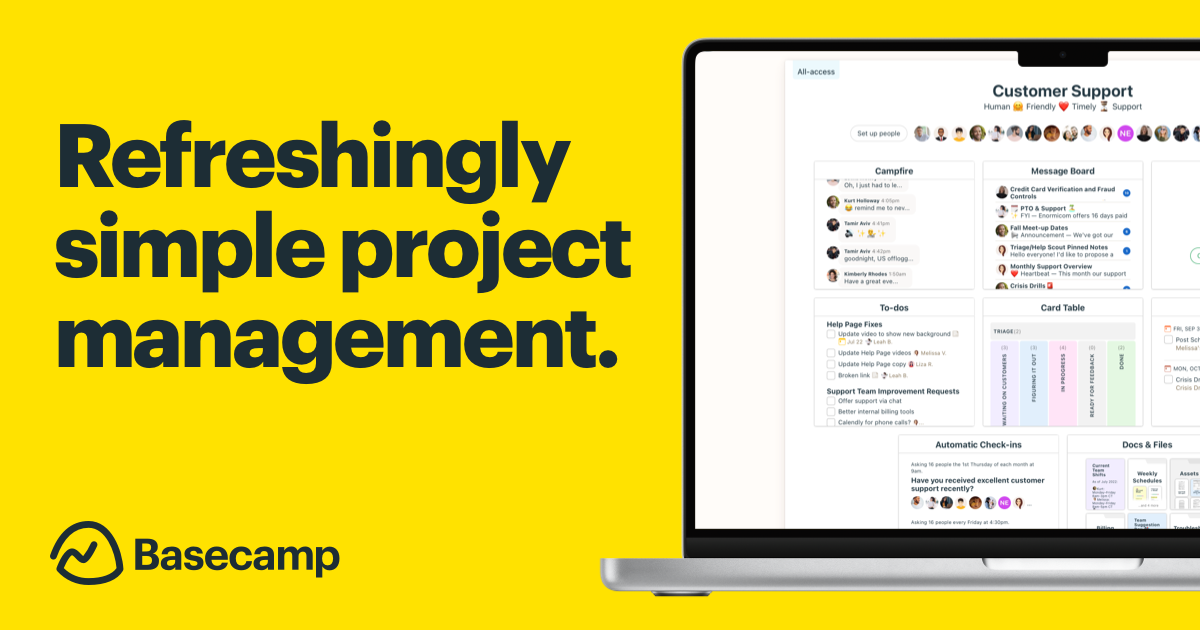
- What Was Done: Basecamp uses agile development to regularly update its project management software, quickly adapting to changing customer needs and technological advancements.
- Results/Impact: Basecamp's agility has helped it maintain a competitive edge in the project management space, retaining a loyal user base and attracting new customers seeking intuitive and flexible tools.
- Organization: Basecamp, Chicago, Illinois, USA (Continuous updates)
- Cross-functional Teams: Agile teams are often cross-disciplinary, with members contributing diverse skills. Atlassian, the company behind tools like Jira and Trello, credits its success to Agile cross-functional teams, which have contributed to its valuation of over $50 billion.
- Embracing Change: Agile Development is open to changing requirements, even late in development. Microsoft’s shift to Agile has allowed for the constant evolution of its Office 365 suite, with monthly updates that refine and introduce features, keeping the product competitive and responsive to customer needs.
Quantitative Impacts of Agile Development
- Customer Satisfaction: Agile’s focus on customer needs has been shown to increase customer satisfaction rates. Salesforce, an early adopter of Agile, boasts a high customer satisfaction score, with reports showing over 90% of customers say the CRM meets their needs.
- Speed to Market: Agile Development can reduce time to market by 37% and increase efficiency by 16%, according to a report by the Project Management Institute.
Case Study: IBM's Hybrid Cloud Development
- Organization: IBM, New York, USA (Implemented in the late 2010s)
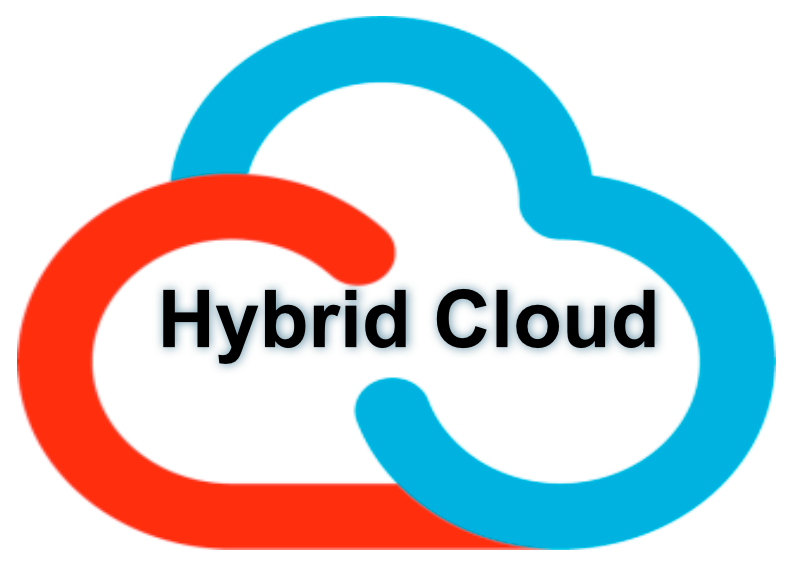
- What Was Done: IBM adopted agile methodologies to accelerate the development of its hybrid cloud services, fostering collaboration and rapid iteration across its global teams.
- Results/Impact: The approach reduced the development cycle time, improved product quality, and increased customer satisfaction by rapidly delivering features in response to user feedback.
- Organization: IBM, New York, USA (Implemented in the late 2010s)
- Product Quality: By emphasizing continuous testing and iteration, Agile practices lead to higher product quality. Cisco reported a 40% decrease in critical defects and a 15% increase in defect removal efficiency after implementing Agile.
- Return on Investment: Agile projects are 28% more successful than traditional projects, leading to better return on investment. For instance, IBM reported a decrease in costs of up to 30% after adopting Agile practices.
Agile Development’s iterative, flexible approach has revolutionized the software industry and beyond, influencing how companies think about product development, customer engagement, and team dynamics. The methodology’s success is quantified not just in software performance metrics but also in broader business impacts, such as increased customer satisfaction, faster time to market, and overall financial performance. It represents a fundamental shift in project management that has become integral to innovation in the fast-paced digital age.

Design Thinking
Design Thinking is a non-linear, iterative process that teams use to understand users, challenge assumptions, redefine problems, and create innovative solutions to prototype and test. It's rooted in the belief that everyone can be part of creating a more desirable future, and that a systematic approach to innovation can produce user-centric products and services.
Core Stages of Design Thinking
- Empathize: Understanding the human needs involved.
- IDEO, a global design company, famously immerses itself in the user's environment to understand the nuances of their experiences, leading to user-centric product designs that resonate with millions worldwide.
- IDEO, a global design company, famously immerses itself in the user's environment to understand the nuances of their experiences, leading to user-centric product designs that resonate with millions worldwide.
- Define: Consolidating information gathered to define the core problems.
- The d.school at Stanford University teaches students to articulate user needs and behaviors to inform impactful design, which has led to successful startups and products.
- The d.school at Stanford University teaches students to articulate user needs and behaviors to inform impactful design, which has led to successful startups and products.
- Ideate: Brainstorming a range of creative solutions.
- Google, for example, holds ideation sessions that lead to a plethora of product ideas—many of which, like Google Maps and AdSense, have become indispensable to billions of users.
- Google, for example, holds ideation sessions that lead to a plethora of product ideas—many of which, like Google Maps and AdSense, have become indispensable to billions of users.
- Prototype: Creating a number of scaled-down versions of the product or specific features found within the product to test the concept.
- Airbnb’s prototype of a new website led to a double increase in revenues after realizing the importance of professional photography for property listings.
- Airbnb’s prototype of a new website led to a double increase in revenues after realizing the importance of professional photography for property listings.
- Test: Rigorous trial and error with the best solutions identified during the prototyping phase.
- Samsung’s iterative design process, often involving extensive user testing, has led to innovative products like the Galaxy Z Fold phone, carving out a niche in the competitive smartphone market.
Quantitative Impact of Design Thinking
- User Engagement: SAP, the enterprise software giant, attributed a 300% increase in user engagement to its adoption of Design Thinking as a strategy for product development.
Case Study: Airbnb's User-Centric Platform Redesign
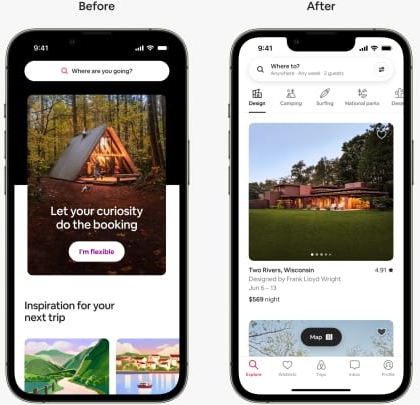
- Company: Airbnb, San Francisco, California, USA (Redesign in 2014)
- What Was Done: Airbnb employed design thinking to overhaul its online platform, focusing on a user-friendly interface and an improved customer experience.
- Results/Impact: The redesign significantly increased bookings and user engagement, propelling Airbnb to become a leader in the hospitality industry.
- Cost Reduction: By applying Design Thinking, IBM reported a 75% reduction in design time and savings of $20 million in a single year due to more efficient product development processes.
- Revenue Growth: After implementing Design Thinking in their approach, Procter & Gamble saw a significant increase in their innovation success rate, from 15% to 50%, leading to a substantial growth in revenues.
Case Study: P&G's Swiffer
- Organization: Procter & Gamble, Ohio, USA (Swifter Launched in 1999)

- What Was Done: P&G used design thinking to develop Swiffer, a cleaning system designed around user experience, which led to a new product category in the cleaning industry.
- Results/Impact: Swiffer became a household name, generating over $500 million in annual sales and spawning numerous spin-off products.
- Organization: Procter & Gamble, Ohio, USA (Swifter Launched in 1999)
Design Thinking has become a strategic tool not only for designers but for everyone involved in the product development process. Its empathetic, customer-first approach has been quantitatively shown to lead to products that better meet user needs, reduce development costs, and significantly increase the success rate of new product introductions. Companies like IDEO, Google, and Airbnb have shown how applying Design Thinking principles can lead to breakthrough innovations and sustainable competitive advantages in the marketplace.

Innovation to market
Bringing innovation to market is a critical phase in the lifecycle of any new product or service. It's about making the leap from concept to commercial reality, a journey that demands as much creativity and strategic thinking as the initial stages of invention. The go-to-market (GTM) strategy is a comprehensive plan that outlines how a company will reach its target customers and achieve a competitive advantage. A well-crafted GTM strategy is essential for successfully launching and selling innovative products.
Key Elements of a Go-to-Market Strategy
- Target Market Identification: Clearly defining who the product or service is for.
- Dropbox focused on tech-savvy users looking for simple cloud storage solutions, rapidly growing its user base through referral incentives.
- Dropbox focused on tech-savvy users looking for simple cloud storage solutions, rapidly growing its user base through referral incentives.
- Value Proposition and Messaging: Articulating what makes the product unique and why it matters to the target audience.
- Tesla’s emphasis on sustainability, performance, and technology has positioned it as a leader in electric vehicles.
Case Study: Blue Apron’s Culinary Innovation
- Company: Blue Apron, New York, USA (Founded in 2012)

- What Was Done: Blue Apron’s go-to-market strategy capitalized on the growing trend of meal kit delivery services. They differentiated themselves through a focus on sustainable farming, unique recipes, and the convenience of home delivery. Initial marketing efforts included targeted online advertising, partnerships with culinary influencers, and a strong social media presence to build brand awareness and loyalty.
- Results/Impact: Blue Apron successfully carved out a niche in the competitive food delivery market, quickly growing its subscriber base and establishing strong brand recognition. Despite facing challenges in maintaining customer retention and navigating operational complexities, Blue Apron’s innovative go-to-market strategy laid the groundwork for the burgeoning meal kit delivery industry.
- Tesla’s emphasis on sustainability, performance, and technology has positioned it as a leader in electric vehicles.
- Channels and Distribution: Deciding how and where customers will buy the product.
- Warby Parker disrupted the eyewear industry by selling directly to consumers online, bypassing traditional retail channels.
- Warby Parker disrupted the eyewear industry by selling directly to consumers online, bypassing traditional retail channels.
- Pricing Strategy: Setting a price that reflects the value of the innovation and meets market expectations.
- Apple’s premium pricing strategy reflects its products' perceived value and innovation.
- Apple’s premium pricing strategy reflects its products' perceived value and innovation.
- Marketing and Promotion: Creating awareness and demand for the product through targeted marketing efforts.
- GoPro leveraged user-generated content to showcase the capabilities of its action cameras, effectively turning customers into brand ambassadors.
Strategies for Successful Market Entry
- Lean Startup Approach: Testing the market with a minimum viable product (MVP) to gather insights and adapt quickly.
- Dropbox’s early use of a simple demo video to gauge interest led to significant pre-launch sign-ups.
Case Study: FinSave’s MVP
- Company: FinSave, San Francisco, USA (founded in 2018)
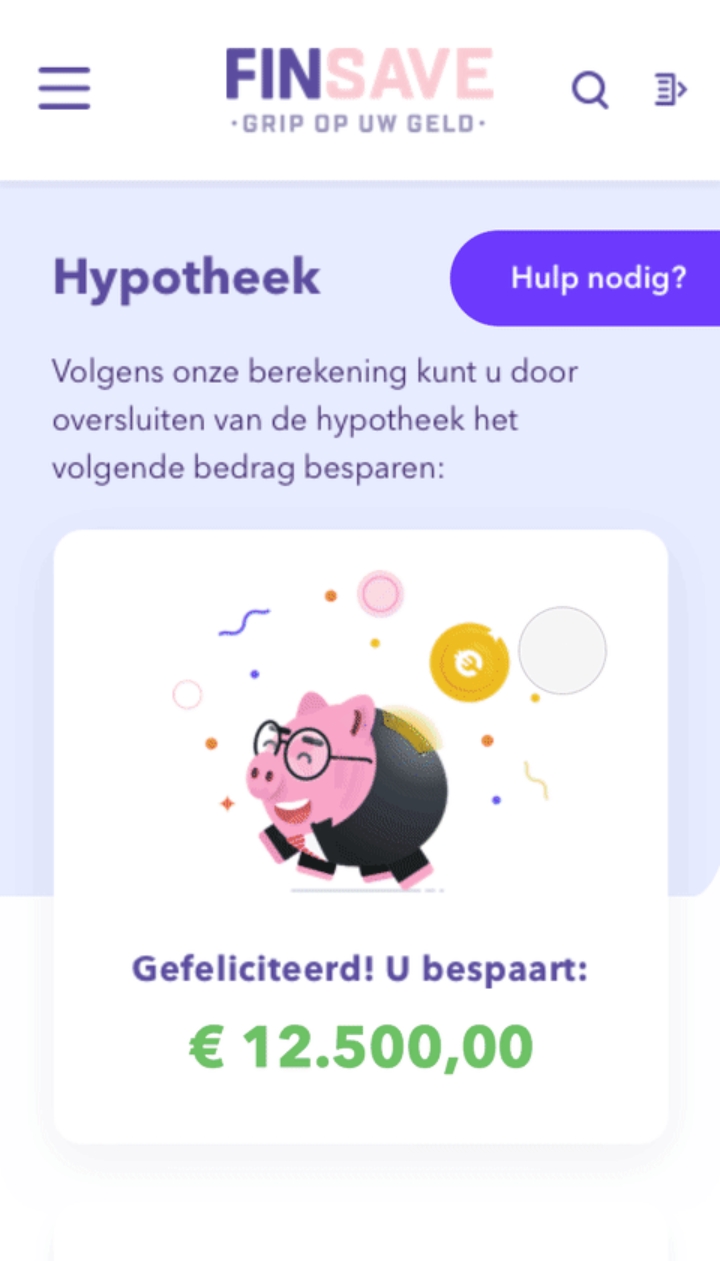
- What Was Done: FinSave, a small FinTech startup, recognized a gap in the market for a budgeting app that would cater to young professionals struggling to manage their finances. They decided to create a mobile app that would help users track their expenses, set savings goals, and receive personalized financial advice. To quickly test the concept and gauge user interest, FinSave developed a Minimum Viable Product (MVP) that included only the core features: expense tracking, budget creation, and basic reporting.
- Development Approach: The MVP was built using a lean startup methodology, focusing on rapid development cycles, and was released within three months of the initial concept. The company used an agile development framework, allowing for continuous iterations based on user feedback. The app’s design was kept minimalistic to ensure ease of use and quick adaptability to changes based on user insights.
- User Testing and Feedback: FinSave conducted a closed beta test with a select group of target users, gathering data on usability, feature attractiveness, and overall user satisfaction. They leveraged analytics tools to monitor how the app was used and identify any pain points in the user journey.
- Results/Impact: The MVP was well-received by the test group, with positive feedback on the app’s simplicity and effectiveness in managing personal finances. Users appreciated the intuitive design and actionable insights provided by the budgeting tool. Key metrics indicated a high level of engagement, with users logging in multiple times per day and consistently tracking their expenses. Based on the MVP’s success, FinSave secured additional funding from investors, which allowed them to expand the app’s features, incorporating AI-driven financial advice and automated savings recommendations. Within a year, the full version of the app was launched, resulting in a 40% increase in user acquisition month-over-month and a significant improvement in user financial outcomes, such as increased savings rates and reduced frivolous spending.
- Dropbox’s early use of a simple demo video to gauge interest led to significant pre-launch sign-ups.
- Partnerships and Collaborations: Joining forces with established brands or platforms to reach new audiences.
- Spotify’s partnerships with Facebook and mobile carriers accelerated its growth by improving access and discovery.
- Spotify’s partnerships with Facebook and mobile carriers accelerated its growth by improving access and discovery.
- Customer Experience Focus: Ensuring that every touchpoint with the product is positive and reinforces the brand.
- Zappos’ exceptional customer service, including free shipping and returns, has been central to its success in the competitive online retail market.
Case Study: Slack’s Disruptive Market Entry
- Organization: Slack Technologies, San Francisco, California, USA (Launched in 2013)
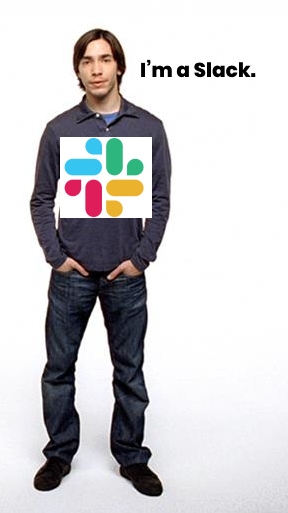
- What Was Done: Slack's go-to-market strategy focused on the bottom-up adoption model. They targeted end-users with a freemium model, offering an intuitive and engaging user experience that encouraged organic growth through word-of-mouth and virality. Slack also focused on integrating seamlessly with existing tools and workflows, enhancing its value proposition.
- Results/Impact: This strategy allowed Slack to rapidly penetrate the market, grow its user base, and disrupt traditional communication tools within organizations. By prioritizing user experience and leveraging network effects, Slack became a leading platform for team collaboration, culminating in its acquisition by Salesforce for $27.7 billion in 2020.
- Zappos’ exceptional customer service, including free shipping and returns, has been central to its success in the competitive online retail market.
- Utilizing Data and Feedback: Continuously collecting and analyzing customer feedback to refine and improve the offering.
- Netflix uses viewing data to inform content development and recommendations, enhancing user engagement.
Case Study: Choices - a Restaurant Delivery Guide in Manhattan
- Company: Big Mouth Publishing, New-York, NY, USA (Choices launched in 1994)

- What Was Done: In the early 1990s, amidst economic downturns, a new venture aimed to convince restaurant owners in Manhattan to join a novel delivery catalog named "Choices". The catalog was designed to feature each restaurant with its logo, menu, opening hours, delivery area, and phone number, facilitated by a computerized system directing calls to the restaurant for a fee. Facing initial resistance and difficulty in securing meetings with restaurant owners, the breakthrough came when the team started inquiring about
 catering services, a strategy that piqued the interest of restaurant managers and owners.
catering services, a strategy that piqued the interest of restaurant managers and owners. - Results/Impact: The strategic pivot to focusing on catering services as an entry point led to successful meetings with numerous restaurant owners, ultimately resulting in about seventy restaurants joining the catalog. This roster included ten McDonald’s branches (most without prior delivery services), two Domino's Pizza branches, and several high-end restaurants. Despite initial skepticism, the delivery service, supplemented by a dedicated catering page
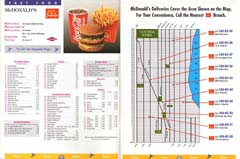 offering tailored advice and services, received a positive response. The innovative approach not only provided a valuable service to restaurants seeking additional income but also catered to a wider customer base looking for delivery options from their favorite eateries.
offering tailored advice and services, received a positive response. The innovative approach not only provided a valuable service to restaurants seeking additional income but also catered to a wider customer base looking for delivery options from their favorite eateries. - For more insights: explore "Choices" and related case studies in our "Marketing Penetration" article.
- Netflix uses viewing data to inform content development and recommendations, enhancing user engagement.
Examples of Successful Market Entries:
- Facebook's Launch Strategy: Initially, Facebook limited access to its platform to Harvard University students, gradually expanding to other Ivy League schools before becoming publicly available, thereby fostering a sense of exclusivity and organic growth.
- Spotify’s Launch Strategy: In a similar manner, Spotify entered the US market with a unique invitation-only approach, creating demand and exclusivity around their music streaming service.
- Instagram’s Simplification: Instagram simplified photo sharing on mobile devices, focusing on ease of use and speed, which was key to its rapid adoption and success.
Challenges in Bringing Innovation to Market
- Navigating Market Saturation: Finding a unique value proposition in a crowded market can be daunting. Yet, companies like Beyond Meat have successfully entered the saturated food industry by offering plant-based meat alternatives, appealing to health and environmentally conscious consumers.
- Adapting to Regulatory Hurdles: Regulatory compliance can be a significant barrier, particularly in industries like healthcare or finance. However, fintech companies like Stripe have navigated these challenges by offering seamless payment solutions that comply with global financial regulations.
- Overcoming Consumer Skepticism: New innovations often face initial consumer skepticism. Electric cars faced this challenge, but through persistent efforts by companies like Tesla, consumer acceptance has grown significantly.
Successfully bringing innovation to market requires a strategic blend of understanding the target customer, crafting a compelling value proposition, choosing the right distribution channels, and effectively promoting the product. Companies that excel in these areas are able to not only launch new innovations but also sustain growth and build a loyal customer base. As the business landscape continues to evolve, the ability to navigate the journey from innovation to market success remains a key determinant of long-term viability and impact.

Brand Extension
Brand extension is a strategy where a company uses an established brand name to introduce new products or services into the market. This approach leverages the existing brand's reputation and customer base to reduce the risks associated with launching entirely new concepts. When executed effectively, brand extensions can diversify a company’s portfolio, foster growth, and strengthen brand equity.
Strategic Considerations for Brand Extension:
- Relevance: The new product must align with the core brand values and promise.
- For example, Google's extension into cloud services with Google Cloud leverages its reputation for innovation and reliability in digital technology.
Case Study: GoPro's Content Platform
- Company: GoPro, California, USA (Launched GoPro Channel in 2014)

- What Was Done: GoPro extended its brand from action cameras to content creation by launching the GoPro Channel, allowing users to upload and share their footage.
- Results/Impact: The platform not only increased brand engagement but also created a new revenue stream through content licensing and partnerships.
- Company: GoPro, California, USA (Launched GoPro Channel in 2014)
- For example, Google's extension into cloud services with Google Cloud leverages its reputation for innovation and reliability in digital technology.
- Quality Consistency: Maintaining the quality that customers expect from the brand is crucial.
- When Apple introduced the Apple Watch, it not only expanded its product lineup but also ensured the new offering met its high standards for design and functionality.
- When Apple introduced the Apple Watch, it not only expanded its product lineup but also ensured the new offering met its high standards for design and functionality.
- Market Fit: Understanding the target market's needs and how the new product fits into the existing product range are vital.
- LEGO’s foray into video games and movies is a prime example of extending its brand into new categories while staying true to its core proposition of creativity and play.
- LEGO’s foray into video games and movies is a prime example of extending its brand into new categories while staying true to its core proposition of creativity and play.
- Differentiation: The extension should offer distinct benefits or features that differentiate it from competitors and other products within the brand’s portfolio.
- Nike’s expansion into fitness technology with the Nike+ ecosystem provides additional value to its athletic apparel and footwear customers.
- Nike’s expansion into fitness technology with the Nike+ ecosystem provides additional value to its athletic apparel and footwear customers.
Case Study: Google's Smart Home Ecosystem
- Organization: Google, California, USA (Expanded into smart home in 2016)
- What Was Done: Google leveraged its brand to extend into the smart home market with Google Home, using its expertise in AI and software.
- Results/Impact: Google has become a significant player in the smart home market, integrating with a multitude of home devices and services.
Examples of Successful Brand Extensions
- Amazon Echo: Amazon extended its e-commerce brand into the smart home space with Echo, leveraging its technological prowess and consumer trust to dominate the market.
- Dyson Airwrap: Known for its vacuum cleaners, Dyson successfully entered the beauty sector with the Airwrap styler, applying its air manipulation technology to hair styling.
- Virgin group: How do you extend a brand?
- This article offers insights from Virgin, which excels in brand extension
Potential Pitfalls and How to Avoid Them
- Overextension: Stretching a brand too far from its core competencies can confuse customers. To avoid this, companies should conduct thorough market research and ensure a logical connection between the brand and the new product category.
- Brand Dilution: Introducing too many extensions or low-quality products can weaken the brand. Focusing on quality and maintaining a clear brand identity helps preserve brand strength.
- Cannibalization: New products should not adversely affect the sales of existing offerings. Strategic pricing and clear differentiation between products within the portfolio can mitigate this risk.
Brand extension, when done thoughtfully, can be a powerful strategy for growth and innovation. It allows companies to explore new markets and categories while leveraging the equity of their established brand. By ensuring relevance, maintaining quality, understanding market fit, and clearly differentiating the new offering, companies can successfully extend their brands and create new avenues for engagement and profitability.

Innovation without Competition
Innovation without competition involves creating or identifying niche markets where a company can operate relatively free from direct competitors, often by innovating new products, services, or business models that address specific, unmet needs. This strategy allows companies to establish strong brand loyalty and enjoy a period of monopoly-like profits until competitors eventually catch up.
Key Strategies for Innovating Without Competition
- Blue Ocean Strategy: This involves creating a new market space ("Blue Ocean") that makes the competition irrelevant.
- Cirque du Soleil achieved this by reinventing the traditional circus, removing animals, and combining theater with acrobatics to create a new entertainment category.
- Read more examples here: Blue Oceans in Israel
- Solving Unaddressed Problems: Identifying and solving problems that no other company is addressing.
- Dyson did this by identifying the common frustration with vacuum cleaners losing suction and invented the first bagless vacuum cleaner using cyclonic separation.
- Dyson did this by identifying the common frustration with vacuum cleaners losing suction and invented the first bagless vacuum cleaner using cyclonic separation.
- Targeting Underserved Segments: Focusing on niche markets that have been overlooked by larger players.
- Warby Parker targeted the high-cost eyewear market by offering stylish glasses online at a fraction of the cost, significantly disrupting the traditional eyewear industry.
- Warby Parker targeted the high-cost eyewear market by offering stylish glasses online at a fraction of the cost, significantly disrupting the traditional eyewear industry.
- Innovative Business Models: Developing new ways of selling or delivering products and services.
- Spotify revolutionized the music industry with its streaming model, allowing users unlimited access to a vast library of music for a monthly subscription fee, a stark contrast to the per-song purchase model of iTunes.
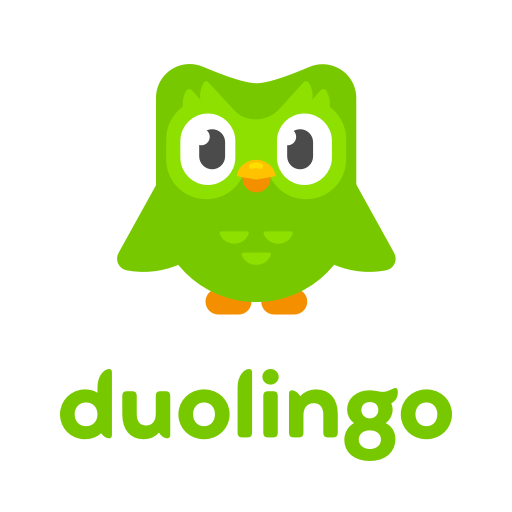 Case Study: Duolingo's Gamified Language Learning
Case Study: Duolingo's Gamified Language Learning- Company: Duolingo, Pennsylvania, USA (Launched in 2011)
- What Was Done: Duolingo offered a free, gamified language learning app at a time when most competitors were paid services, creating a new category in language education.
- Results/Impact: Duolingo has grown to be one of the most popular language learning platforms with a unique approach, facing little direct competition in its specific niche.
- Spotify revolutionized the music industry with its streaming model, allowing users unlimited access to a vast library of music for a monthly subscription fee, a stark contrast to the per-song purchase model of iTunes.
Examples of Creating Markets Without Competition
- Tesla, Inc.: Tesla created a new market for high-performance electric vehicles (EVs), establishing itself as the leader in a sector that was virtually non-existent before its inception.
- Beyond Meat: By developing plant-based meat products that closely mimic the taste and texture of animal meat, Beyond Meat tapped into the growing demand for sustainable and ethical food choices, creating a new category within the food industry.
Benefits and Challenges of Innovating Without Competition
- First-mover Advantage: Companies can establish strong brand recognition and customer loyalty before competitors enter the market. However, being the first mover also involves higher risks and costs associated with educating the market and developing the infrastructure.
Case Study: Amazon Web Services (AWS)

- Company: Amazon, Washington, USA (AWS launched in 2006)
- What Was Done: Amazon pioneered cloud computing services with AWS, providing scalable infrastructure services to businesses.
- Results/Impact: AWS became the leader in cloud services with little initial competition, giving Amazon a significant first-mover advantage in the market.
- Price Setting: Without direct competition, companies have greater flexibility in pricing strategies. The challenge is to set prices that maximize profitability without discouraging early adoption.
- Market Education: A significant challenge is the need to invest in market education to build awareness and demand for the new product or service. Successful education efforts can create a loyal customer base and a significant barrier to entry for future competitors.
Innovation without competition allows companies to carve out unique positions in the market, creating value in ways that were previously unimagined. While the strategy offers significant opportunities for growth and profitability, it requires careful planning, a deep understanding of customer needs, and the ability to execute effectively. Companies that succeed in creating and dominating new markets not only achieve financial success but also change the landscape of their industries, often becoming synonymous with the innovations they introduce.

Innovation Adoption Curve
The Innovation Adoption Curve, originally conceptualized by sociologist Everett Rogers in his Diffusion of Innovations theory, outlines how different segments of the population adopt new technologies or ideas over time. Understanding this curve is crucial for businesses aiming to introduce innovative products or services into the market, as it helps in tailoring marketing strategies to various consumer segments.
Segments of the Innovation Adoption Curve
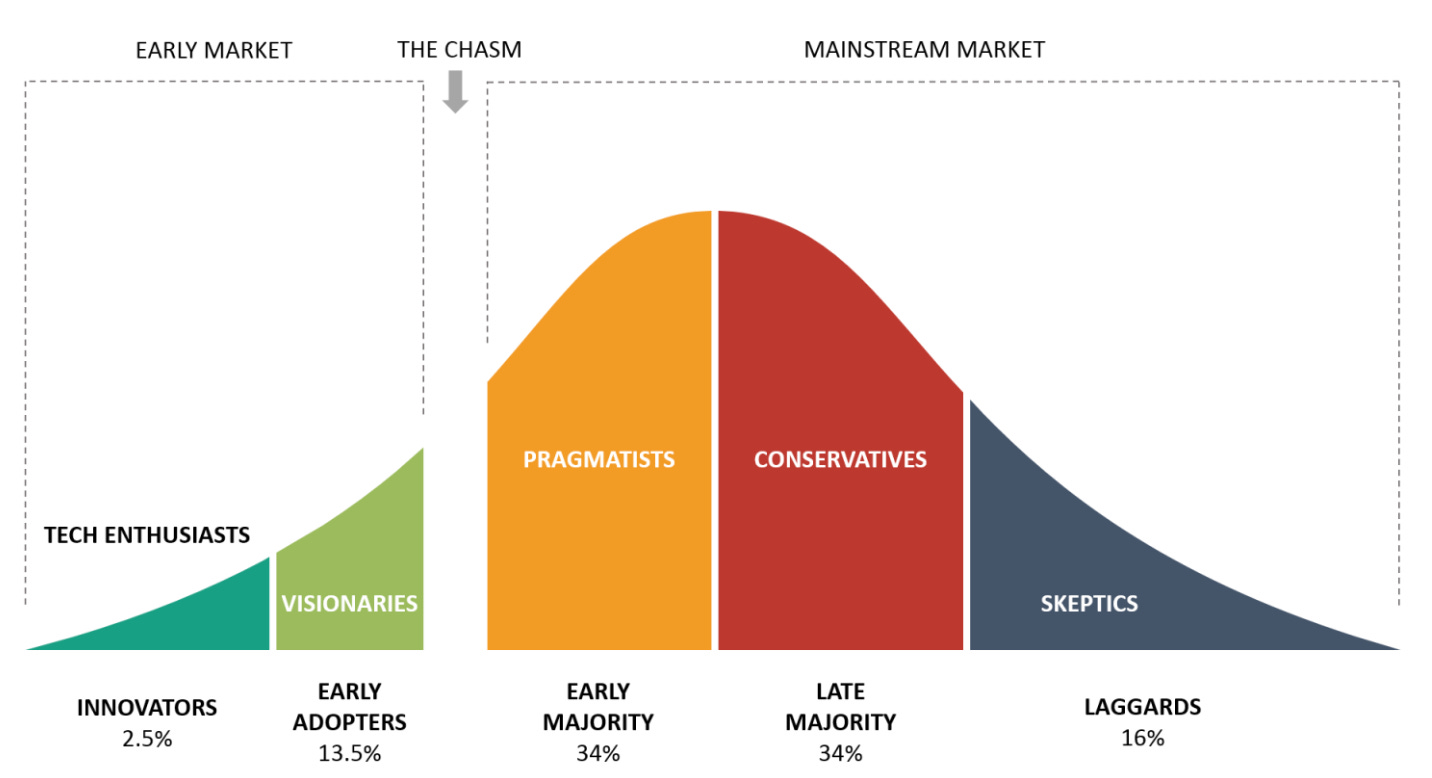 Innovators (2.5%): These are the first to adopt an innovation. They are risk-takers and are willing to try new things. Example: Users who bought the first-generation iPhone, embracing smartphone technology when it was still unproven.
Innovators (2.5%): These are the first to adopt an innovation. They are risk-takers and are willing to try new things. Example: Users who bought the first-generation iPhone, embracing smartphone technology when it was still unproven.- Early Adopters (13.5%): This group has a higher degree of opinion leadership among peers. They adopt early but carefully. Example: Professionals who started using Zoom for video conferencing before it became widespread during the pandemic.
- Early Majority (34%): These individuals adopt an innovation after a varying degree of time. This group needs evidence that the innovation works before making a decision. Example: The broader consumer market that adopted LED bulbs as prices dropped and benefits became clear.
- Late Majority (34%): Skeptical and adopting the innovation after the average member of society. They adopt mainly because of economic necessity or peer pressure. Example: Users who transitioned to smartphones from feature phones when they became the standard communication tool.
- Laggards (16%): The last to adopt an innovation. This group has an aversion to change and might only adopt it due to no other alternatives. Example: Individuals using traditional banking methods and avoiding online banking services until physical branches become less accessible.
Strategies for Targeting Each Segment
- Innovators:
- Focus on cutting-edge technology and exclusivity.
- Marketing should highlight innovation and advanced features.
- Early Adopters:
- Emphasize benefits, usability, and prestige.
- Testimonials and case studies can be effective.
Case Study: Apple's iPhone
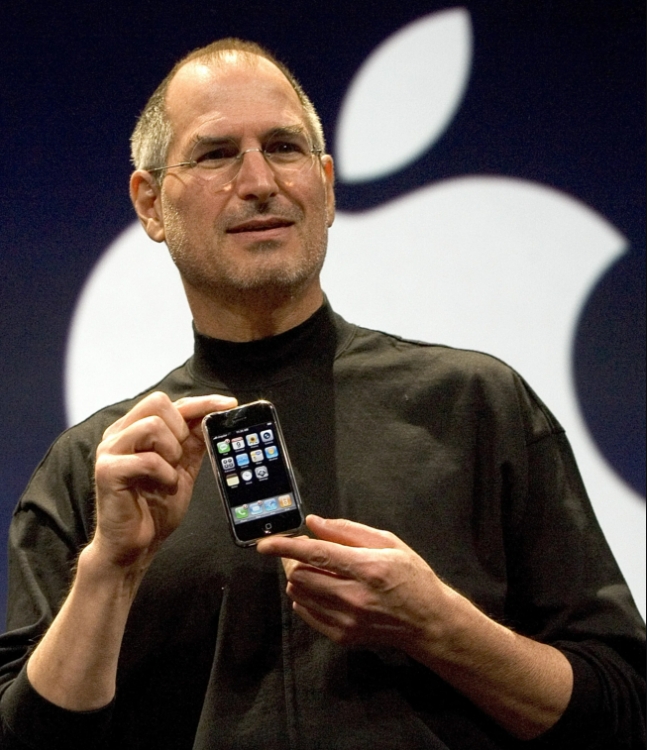
- Company: Apple Inc., California, USA (Introduced in 2007)
- What Was Done: Apple's launch of the iPhone revolutionized the smartphone market, with its adoption following the classic 'S-curve' of innovation adoption.
- Results/Impact: The iPhone quickly moved from early adopters to the mass market, dominating the smartphone industry and influencing mobile technology on a global scale.
- Early Majority:
- Provide evidence of effectiveness and value.
- Comparisons and detailed information help in decision-making.
- Late Majority:
- Stress practical benefits and ease of use.
- Offer incentives and highlight widespread adoption.
- Laggards:
- Address barriers to adoption and offer personal assistance.
- Simplify the technology and emphasize necessity.
Case Study: Fitbit's Wearable Fitness

- Company: Fitbit, California, USA (Market entry in 2009)
- What Was Done: Fitbit introduced wearable fitness trackers when the market was nascent, appealing first to fitness enthusiasts before reaching widespread adoption.
- Results/Impact: Fitbit's products have become synonymous with the health and wellness movement, leading to its position as a market leader in wearable technology.
Understanding the innovation adoption curve allows companies to strategically plan their product launches and marketing efforts. By recognizing the characteristics and motivations of each group, businesses can more effectively communicate the value of their innovations, maximize market penetration, and achieve sustained growth. Tailoring the approach to each segment ensures that innovations find their audience at the right time, accelerating the diffusion process and leading to commercial success.
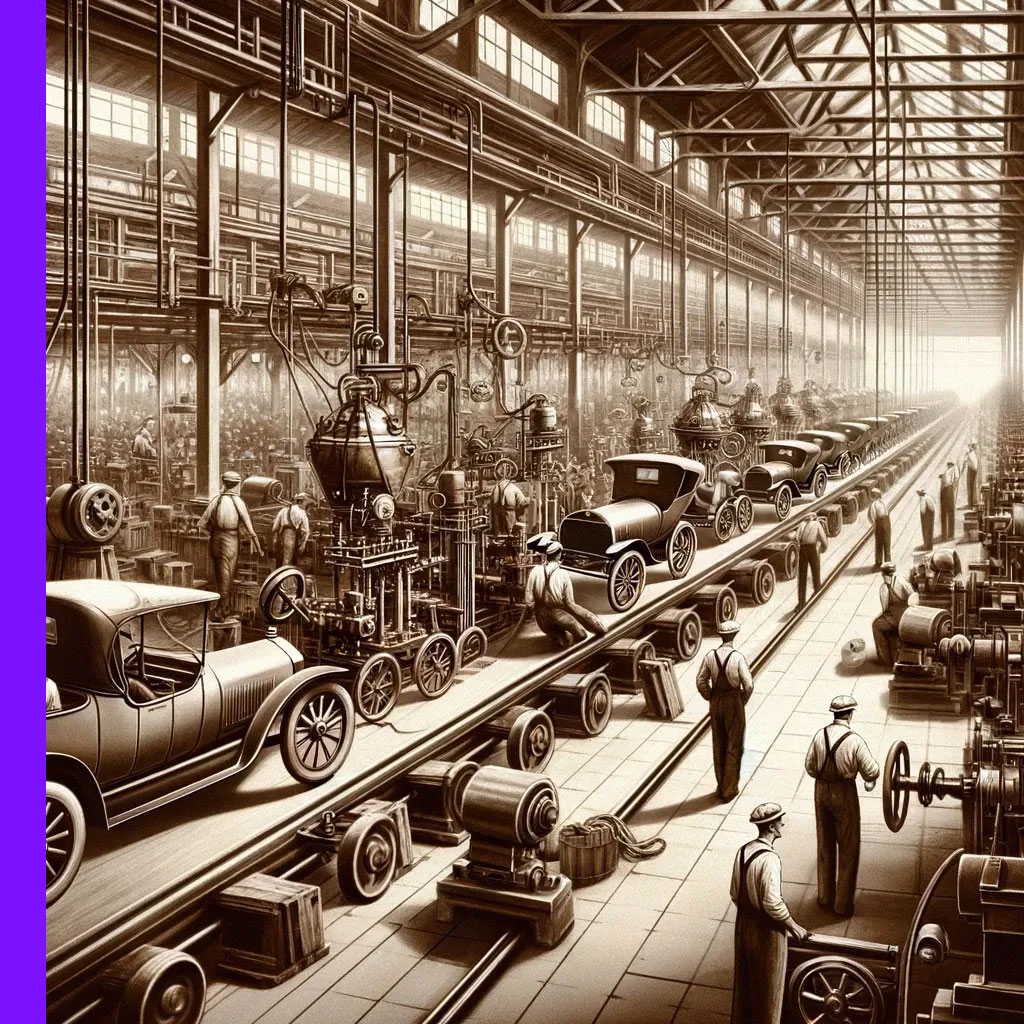
Innovations by Henry Ford
Henry Ford, the founder of Ford Motor Company, is often hailed as a pioneer of modern industrial innovation. His contributions went beyond the creation of the Model T; he revolutionized the manufacturing process itself, making automobiles affordable for the average American and fundamentally changing the way products were produced. Ford's innovations were not just in product development but also in manufacturing processes, labor relations, and sales strategies.
Key Innovations Introduced by Henry Ford
- Assembly Line Production: Ford's most famous innovation, the moving assembly line, introduced in 1913, drastically reduced the time it took to build a car. By breaking down the manufacturing process into simpler tasks, Ford reduced the Model T assembly time from 12 hours to just 90 minutes.
- Mass Production Technique: Coupled with the assembly line, Ford's approach to mass production allowed for the rapid creation of standardized products. This not only made cars more affordable but also set a precedent for manufacturing industries worldwide.
- $5 Workday: In 1914, Ford introduced the $5 workday, doubling the average wage for factory workers. This was a strategic move to reduce employee turnover, boost morale, and increase productivity. It also enabled his employees to become customers, further expanding the market for automobiles.
- Vertical Integration: Ford sought to control every aspect of the production process, from raw materials to final assembly. The acquisition of resources like rubber plantations and coal and iron mines ensured a steady supply of materials, reducing costs and improving efficiency.
- Dealer Franchise System: To sell his automobiles, Ford developed a network of franchised dealers across the country. This system not only expanded its market reach but also laid the foundation for modern automotive sales.
What made Henry ford so Successful?
Henry Ford's success can be attributed to a combination of his visionary leadership, innovative business practices, and personal qualities that made him unique and successful. Here are some key factors:
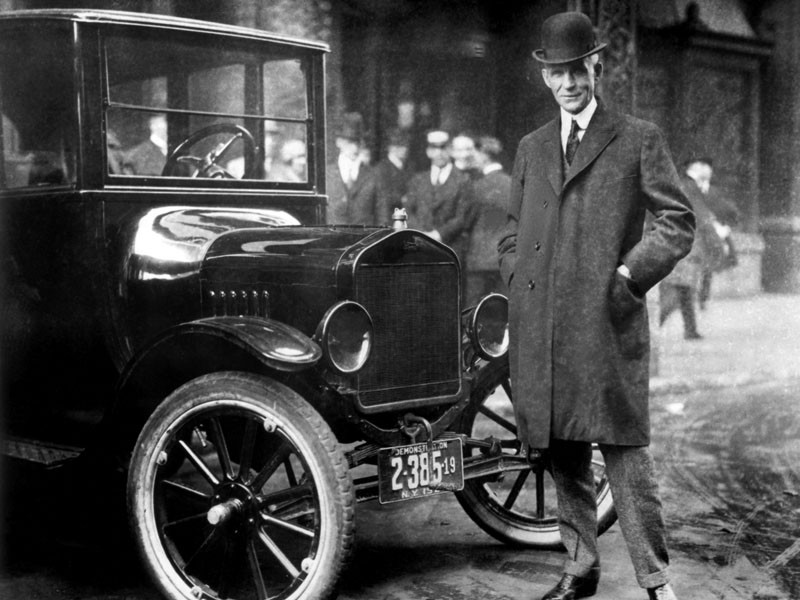 Mass Production Vision: Ford revolutionized the automobile industry by implementing the assembly line technique of mass production. This innovation significantly lowered the cost of production, making cars affordable to the general public for the first time. His vision was not just to build a car but to build an affordable car for every American, thereby changing the way people lived, worked, and traveled.
Mass Production Vision: Ford revolutionized the automobile industry by implementing the assembly line technique of mass production. This innovation significantly lowered the cost of production, making cars affordable to the general public for the first time. His vision was not just to build a car but to build an affordable car for every American, thereby changing the way people lived, worked, and traveled.- Business Acumen: Ford had a keen sense of business and understood market dynamics. He focused on creating a product that met widespread needs and was accessible to a broad audience. His strategies in marketing, pricing, and production set new standards in the industry.
- Continuous Improvement: He believed in constant innovation and improvement, not just in terms of product design but also in manufacturing processes. This mindset led to increased efficiency and lower costs, which were pivotal to his company's success.
- Employee Welfare: Ford was ahead of his time in recognizing the importance of worker satisfaction and its impact on productivity. He famously doubled his workers' wages to $5 a day, which was unprecedented at the time. This not only reduced employee turnover but also increased productivity and loyalty, and it enabled his employees to afford the cars they were producing, thereby expanding his market.
- Persistence and Resilience: Ford faced multiple failures and challenges, including closing his first company (Detroit Automobile Company, 1899)) after struggling with high production costs and low quality products, leaving his second company (that became Cadillac) due to disagreements with financial backers over the company's direction, and multiple prototype failures before the successful launch of Model T. His persistence and resilience in the face of adversity were crucial to his eventual success. He viewed failures as opportunities to learn and improve.
- Simplification: Ford focused on simplicity, both in product design and in the manufacturing process. The Model T, his most famous car, was designed to be simple, durable, and easy to repair, which made it incredibly popular.
- Personal Leadership Style: Ford's leadership style was hands-on and visionary. He was involved in every aspect of his company's operations, from design to production to marketing. His ability to inspire and lead his team was central to his company's achievements.
Impact of Ford's Innovations
- Automobile Industry Transformation: Ford's innovations transformed the automobile from a luxury item into a mass-market product, contributing to the motorization of America and the development of a car culture.
- Manufacturing Sector Influence: The principles of assembly line production and mass production pioneered by Ford were adopted by other industries, leading to significant increases in productivity and the growth of consumer goods industries.
- Economic and Social Impact: Ford's labor practices, including the $5 workday, had a profound impact on industrial labor relations, contributing to the rise of the middle class and changing the social dynamics in the 20th century.
Henry Ford's legacy is a testament to the power of innovation not only in product development but also in creating processes that redefine industries. His vision for affordable transportation and his pioneering manufacturing techniques democratized the automobile and set the stage for the modern industrial economy. Ford's contributions remain a cornerstone in the study of industrial innovation and its socio-economic impacts.
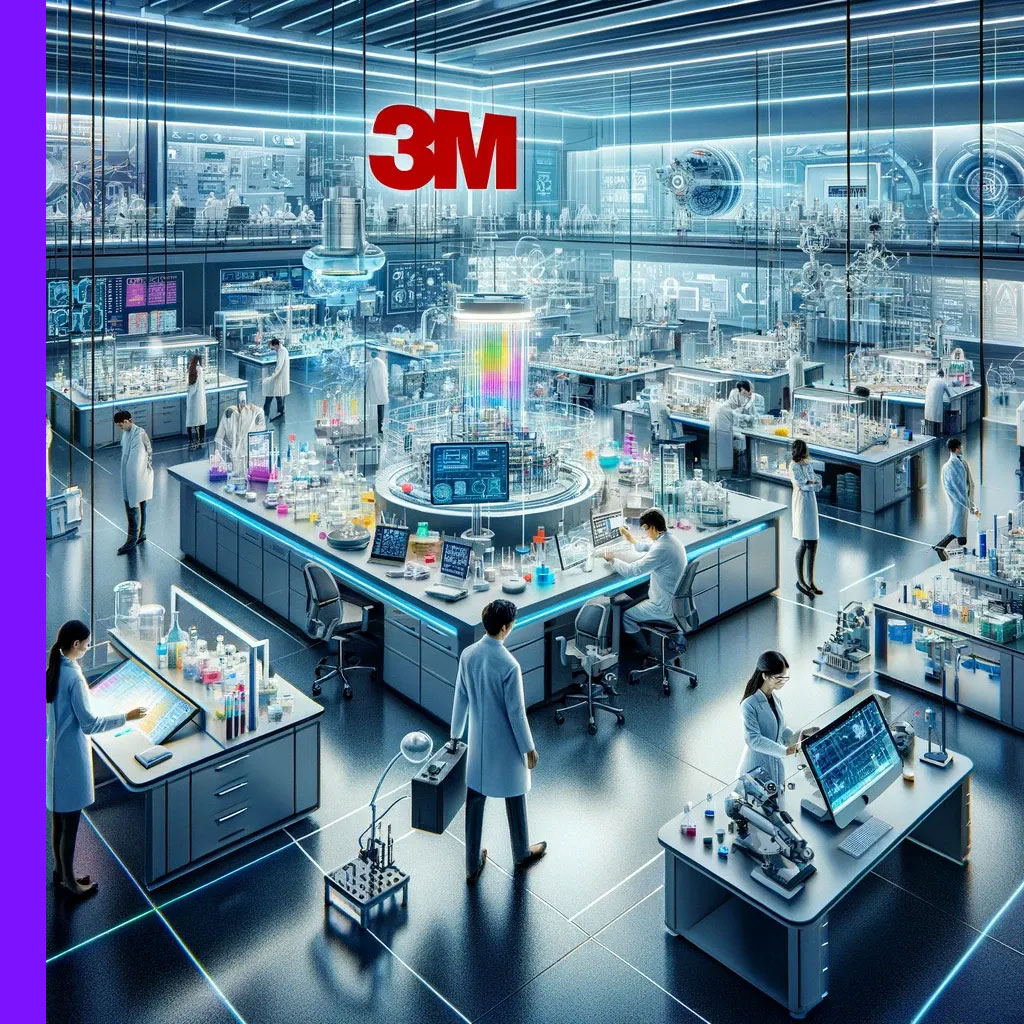
3M, The Innovation Company
3M's journey from a small mining venture to a global innovation powerhouse is a testament to the power of resilience and creativity in business. Founded in 1902 by five businessmen in Two Harbors, Minnesota, the company initially aimed to mine a mineral deposit for grinding-wheel abrasives. However, the venture quickly hit a snag when the mineral, thought to be corundum, turned out to be a low-grade anorthosite, essentially "fool's gold" for their intended purposes.
This early setback could have spelled the end for the fledgling company, but instead, it marked the beginning of 3M's commitment to innovation. The company's first true innovation came from a necessity to survive; they developed and sold waterproof sandpaper, which improved the efficiency and quality of automotive painting.
This success was the catalyst for 3M's enduring pledge to develop "new to the world" solutions, leading to a diverse portfolio of products that span across various industries today. 3M's ability to pivot from its original mining operation to a focus on manufacturing and innovation laid the groundwork for a culture that thrives on creativity, problem-solving, and continuous improvement, defining the company's identity for over a century.
Innovation at 3M Nowadays
 3M, formerly known as the Minnesota Mining and Manufacturing Company, is a global powerhouse of innovation known for its wide range of products used in homes, businesses, schools, and industries worldwide. With the motto of "Science. Applied to Life.", 3M has a storied history of turning creative ideas into ingenious products. Its culture of innovation is deeply embedded in the company’s DNA, making it a leader in various sectors, including healthcare, consumer goods, and safety.
3M, formerly known as the Minnesota Mining and Manufacturing Company, is a global powerhouse of innovation known for its wide range of products used in homes, businesses, schools, and industries worldwide. With the motto of "Science. Applied to Life.", 3M has a storied history of turning creative ideas into ingenious products. Its culture of innovation is deeply embedded in the company’s DNA, making it a leader in various sectors, including healthcare, consumer goods, and safety.
Core Elements of 3M’s Innovation Strategy
- 15 Percent Time: One of 3M's most famous innovation practices is allowing its employees to use up to 15% of their work time to pursue their own project ideas. This approach led to the creation of the Post-it Note, one of 3M's most iconic products, showcasing the value of giving employees the freedom to explore and innovate.
- The Dual Ladder Career Path: 3M has established a unique system that allows technical personnel to rise through the ranks to positions of significant influence without transitioning into traditional managerial roles. This encourages a focus on innovation and product development.
- Cross-Pollination of Ideas: By encouraging collaboration across different departments, 3M facilitates the exchange of ideas and expertise, leading to innovative product solutions. An example is the development of optical films used in electronics, drawing on 3M’s expertise in materials science from various sectors.
- Customer-Driven Innovation: 3M closely collaborates with customers to identify unmet needs, leading to the development of tailored solutions. This approach has led to innovations such as transparent dental aligners and water-soluble films for drug delivery.
- Investment in R&D: 3M invests approximately 6% of its sales back into research and development, significantly higher than the industry average. This substantial investment fuels the continuous flow of innovative products and solutions.
Notable Innovations and Their Impact
- Post-it Notes: Originally a failed adhesive, the repositionable sticky note has become ubiquitous in offices and homes around the globe, illustrating how unexpected discoveries can lead to successful products.
- Scotch-Brite™: Leveraging expertise in mineral technology, 3M developed a durable, non-woven fiber scrubbing pad, transforming cleaning practices in millions of households.
- Filtrete™ Air Filters: Utilizing microfiber technology, 3M created high-performance air filters, improving air quality in homes and workplaces, showcasing 3M's commitment to enhancing everyday life through innovation.
- Cubitron™ II Abrasives: These precision-shaped grain abrasives cut faster and last longer than conventional products, demonstrating 3M’s ability to innovate in industrial applications.
- 3M™ VHB™ Tapes: These high-strength bonding tapes have replaced rivets and welds in many applications, from electronic devices to construction, illustrating 3M's pioneering role in adhesive technologies.
The Post-it Story
The invention of the Post-it Note, one of 3M's hallmark innovations, is a testament to the company's culture of creativity, persistence, and intrapreneurship. The journey began in 1968 when Dr. Spencer Silver, a chemist at 3M, was attempting to develop a super-strong adhesive. Instead, he accidentally created a low-tack, reusable adhesive. For five years, Silver pitched his discovery within 3M without finding a practical application, embodying the adage, "a solution looking for a problem."
The breakthrough came when another 3M scientist, Art Fry, attended one of Silver's seminars in 1974. Fry sang in a church choir and was frustrated with his bookmarks falling out of his hymnal. He realized Silver's adhesive could be the solution, leading to the development of a repositionable bookmark. The initial idea evolved into the Post-it Note we know today.
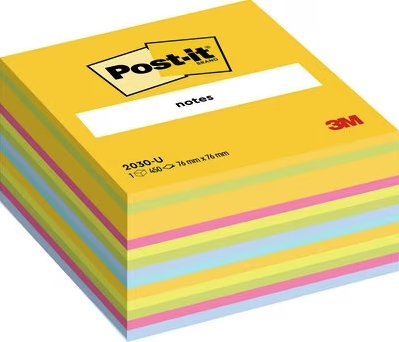 Despite initial market resistance, Fry's perseverance and the support of 3M's management led to a successful test launch in 1977 in four cities under the name "Press 'n Peel" bookmark. The product was rebranded as "Post-it Notes" and launched nationwide in 1980 after a direct marketing campaign showcased their utility. The Post-it Note quickly became an indispensable tool for communication and organization worldwide.
Despite initial market resistance, Fry's perseverance and the support of 3M's management led to a successful test launch in 1977 in four cities under the name "Press 'n Peel" bookmark. The product was rebranded as "Post-it Notes" and launched nationwide in 1980 after a direct marketing campaign showcased their utility. The Post-it Note quickly became an indispensable tool for communication and organization worldwide.
3M's treatment of Dr. Silver and Art Fry exemplifies the company's commitment to recognizing and rewarding its innovators. Both were celebrated within 3M, receiving numerous awards and honors for their contributions. Dr. Silver was inducted into the National Inventors Hall of Fame in 2010. The success of the Post-it Note not only cemented 3M's reputation as an innovation-driven company but also underscored the value of perseverance, internal collaboration, and the freedom to explore new ideas. This story highlights how 3M's environment nurtures the inventive spirit, encouraging employees to pursue projects passionately, even when the path to commercial application is not immediately clear.
3M’s approach to innovation, characterized by a blend of creative freedom, cross-disciplinary collaboration, customer focus, and significant R&D investment, has established it as a leader in creating products that solve problems and improve lives. The company’s success across diverse industries underscores the effectiveness of its innovation model, proving that a culture of curiosity and experimentation can lead to remarkable achievements.

Innovation with Plastic Bottles
In an era where sustainability has become a global imperative, innovative uses of plastic bottles exemplify how creativity can transform waste into valuable resources. Plastic bottles, often criticized for their environmental impact, have been repurposed in numerous ways that contribute to sustainability, social development, and even art.
Creative and Sustainable Uses of Plastic Bottles
- Building Materials: In many parts of the world, plastic bottles filled with sand are used as bricks to construct houses. This method not only recycles waste but also provides an affordable and thermally efficient building solution. For instance, the Eco-Tec's Ecoparque El Zamorano in Honduras utilizes this technique, showcasing its viability.
Case Study: EcoBrick
- Company: EcoBrick Exchange, South Africa (Founded in 2013)
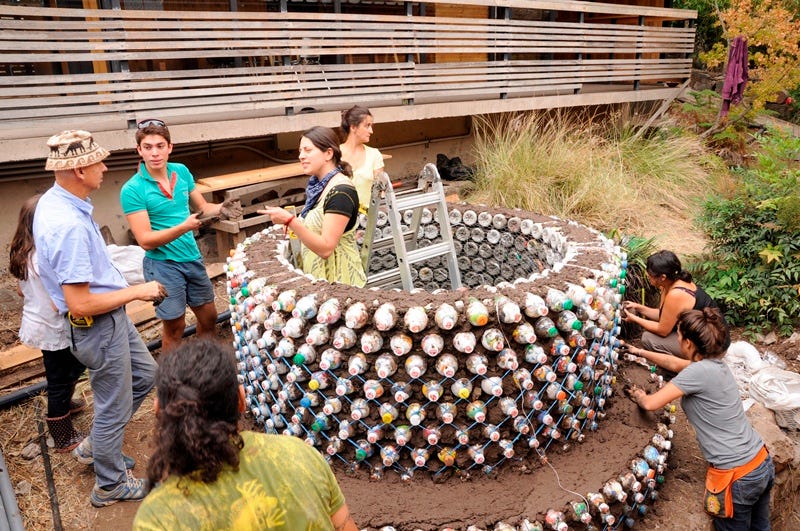
- What Was Done: EcoBrick Exchange encourages individuals to fill used plastic bottles with non-biodegradable waste, creating EcoBricks that are used as reusable building blocks.
- Results/Impact: EcoBricks have been used in constructing furniture, gardens, and even small buildings, promoting recycling and sustainability in communities around the world.
- Company: EcoBrick Exchange, South Africa (Founded in 2013)
- Vertical Gardens: Urban areas with limited green spaces have adopted vertical gardens made from plastic bottles. These innovative gardens can be seen adorning walls and balconies, contributing to urban beautification and air purification.
- Solar Water Heaters: Ingenious designs have enabled the use of plastic bottles to create solar water heaters. An example of this can be found in Brazil, where low-income communities utilize plastic bottles and cartons to harness solar energy, providing an economical alternative to traditional water heating methods.
- Boats and Floating Islands: Used plastic bottles have been assembled into boats and even floating islands, demonstrating their buoyancy and durability. A notable example is the Floating Island in Mexico, built by Richart Sowa, which supports a three-story structure and lush garden.
- Recycled Fashion: The fashion industry has begun to incorporate recycled plastic bottles into fabrics, producing everything from casual wear to haute couture. Brands like Patagonia have been pioneers in this space, creating fleece jackets from recycled bottles.
Innovative Products Derived from Plastic Bottles
- Water Filtration Systems: Companies have developed water filtration systems using plastic bottles, addressing clean water access issues in underserved communities.
- Modular Furniture: Designers have created modular furniture pieces from plastic bottles, offering sustainable and customizable home decor options.
- Insulation Materials: Recycled plastic bottles are processed into fibers that are used as insulation materials in construction, providing eco-friendly alternatives to traditional insulators.
- Art Installations: Artists around the globe use plastic bottles to create impactful installations that raise awareness about environmental conservation.
Smart Plastic Bottles
These bottles are equipped with technology to enhance the user experience. Examples include:
- Built-in Sensors: Some plastic bottles now come with sensors that can track water intake, reminding users to stay hydrated. These smart bottles connect to smartphones via apps, allowing users to monitor their hydration levels throughout the day.
- Interactive Labels: Plastic bottles have been designed with labels that change color or display messages when the product is at the ideal temperature for consumption. This technology has been used for beverages like milk or sports drinks, ensuring that consumers enjoy their drinks at the best possible temperature.
- Self-Cleaning Bottles: Leveraging advanced materials and technology, some plastic bottles can now clean themselves using UV-C light technology. This innovation is aimed at water bottles, ensuring that the water and the bottle itself remain free from bacteria and other pathogens without the need for manual cleaning.
Additional Innovations in Plastic Bottles
Plastic bottle innovation extends beyond smart technologies and sustainability, exploring various other aspects like design, functionality, and user convenience. Here are a few notable examples:
- Collapsible Bottles: Designed for portability and space-saving, these bottles can be folded or collapsed when not in use, making them ideal for travelers, hikers, and people on the go. They address the need for convenience without compromising on the utility of having a water bottle handy.
- Filter-Incorporated Bottles: While not necessarily "smart" in the technological sense, these bottles include built-in filtration systems that purify water as you drink, removing contaminants and improving taste. This innovation is particularly valuable for outdoor adventurers or individuals in areas where water quality is a concern.
- Enhanced Durability Designs: Innovations in the material composition of plastic bottles have led to more durable, shatter-resistant bottles. These bottles are designed to withstand high impact, making them suitable for sports and outdoor activities where traditional plastic bottles might easily break.
- Multi-Compartment Bottles: These bottles feature separate compartments for holding different items simultaneously, such as drinks and snacks, or liquid and powder supplements. This design caters to the needs of fitness enthusiasts and travelers looking for multi-functional products.
- Ergonomic Designs: Advances in ergonomic design have led to bottles shaped for easier handling, grip, and use during physical activities. These designs often include features like contoured shapes for better grip, or one-handed opening mechanisms, enhancing user experience during workouts or while on the move.
- Temperature Retention: Innovations in insulation within plastic bottles allow for better temperature retention, keeping beverages hot or cold for extended periods. This functionality, traditionally associated with metal bottles, has been incorporated into certain high-tech plastic bottles for consumers who prioritize temperature control without the weight of metal.
Challenges and Opportunities - Plastic bottles
While the innovative use of plastic bottles offers numerous environmental and economic benefits, challenges remain in scaling these solutions and managing the lifecycle of plastics sustainably. The key to overcoming these challenges lies in continued innovation, public awareness, and supportive policies that encourage recycling and the circular economy.
Innovation with plastic bottles has showcased a remarkable journey from mere containers to pivotal elements in sustainability, technology, and design. Whether it's through creating sustainable building materials, enhancing fashion with recycled fabrics, or revolutionizing the user experience with smart technology, plastic bottles have transcended their original purpose.
The transformation of plastic bottles into boats, floating islands, and solar water heaters exemplifies not only the versatility of this material but also the creative potential of recycling in addressing environmental challenges. Meanwhile, advancements in bottle design, from collapsible forms to ergonomic and multi-compartment features, highlight the industry's commitment to user convenience and functionality.
As we navigate the challenges of plastic waste, these innovations serve as a testament to human ingenuity and our capacity to reimagine and repurpose everyday objects for a better future. The path forward requires a balanced approach that embraces both technological innovation and sustainable practices, ensuring that the legacy of plastic bottles is not defined by environmental impact but by their role in pioneering solutions for a greener planet.
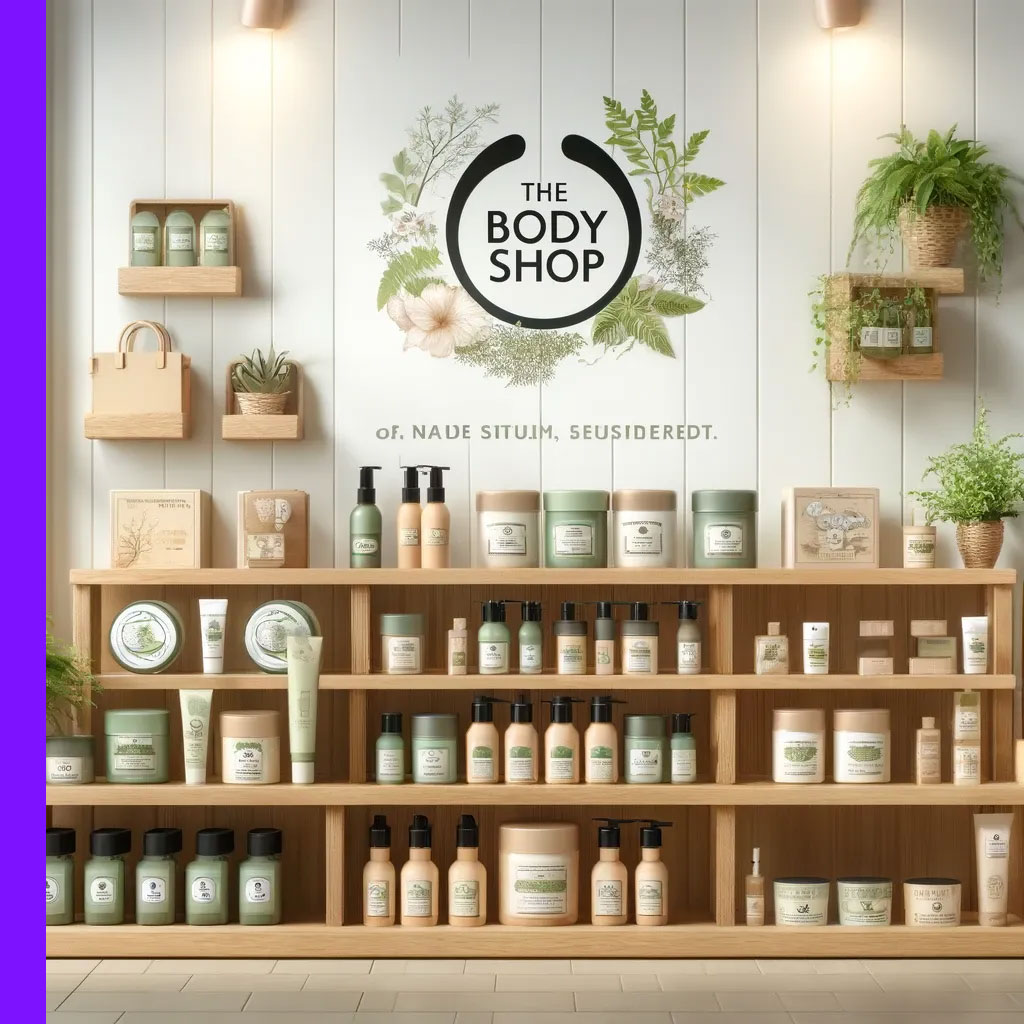
Innovations at Body Shop
The Body Shop, founded by Anita Roddick in 1976, has long been synonymous with not just beauty and skincare products but also with pioneering ethical business practices and innovation. From its inception, The Body Shop has demonstrated that a company can be both profitable and socially responsible, challenging the norms within the cosmetics industry.
Innovative Practices and Products by The Body Shop
- Against Animal Testing: The Body Shop was one of the first global cosmetics brands to campaign against animal testing, leading to an innovative range of cruelty-free products. This stance not only set new industry standards but also led to the EU ban on animal testing for cosmetics in 2013.
- Community Fair Trade Program: Launched in 1987, this program was groundbreaking, ensuring fair prices and sustainable livelihoods for suppliers in exchange for ingredients and accessories from around the world. This initiative has benefited over 25,000 people in 21 countries, showcasing how ethical sourcing can be integrated into business models.
- Recycling and Refill Programs: The Body Shop introduced a pioneering recycling scheme, encouraging customers to return empty product containers for recycling. The recent relaunch of its refill program across stores globally aims to reduce plastic use significantly, demonstrating an ongoing commitment to innovative environmental solutions.
- Bio-Bridges: The Body Shop's Bio-Bridges program aims to regenerate wildlife corridors to enable endangered species to reconnect and breed, showing an innovative approach to conservation. This initiative highlights how businesses can contribute to biodiversity and environmental protection.
- Hemp-Based Products: Recognizing the sustainability and versatility of hemp, The Body Shop was one of the first to develop a range of hemp-based skincare products, catering to the needs of very dry skin. This not only utilized a less common ingredient but also tapped into the growing demand for natural and sustainable beauty products.
Expanding the Boundaries of Beauty and Ethics
- Packaging Innovation: The Body Shop has experimented with various sustainable packaging solutions, including using recycled plastic and introducing refill stations in stores to minimize waste.
- Advocacy and Campaigning: Beyond products, The Body Shop has used its platform for advocacy, campaigning on issues from domestic violence to climate change, engaging customers in social and environmental causes.
 Functional Cosmetics: The Body Shop revolutionized the cosmetics industry by focusing on the functionality and ethical sourcing of its products, stripping away the glamour and hype typically associated with cosmetics advertising. This approach, highlighted in the book “Blue Ocean Strategy,” differentiated the brand by offering straightforward, effective products like a soap labeled simply as "soap," appealing to consumers seeking authenticity and environmental responsibility.
Functional Cosmetics: The Body Shop revolutionized the cosmetics industry by focusing on the functionality and ethical sourcing of its products, stripping away the glamour and hype typically associated with cosmetics advertising. This approach, highlighted in the book “Blue Ocean Strategy,” differentiated the brand by offering straightforward, effective products like a soap labeled simply as "soap," appealing to consumers seeking authenticity and environmental responsibility.
The Body Shop's journey underscores the potential of innovation rooted in ethical convictions and social responsibility. By integrating these values into every aspect of its operations, from product development to supply chain management, The Body Shop has not only carved a niche for itself in the cosmetics industry but also led the way in demonstrating how business can be a force for good. As the brand continues to evolve, its legacy of innovation serves as a reminder that true beauty lies in making a positive impact on the world.

Innovations in Dentistry
Dentistry has witnessed significant innovations that have transformed patient care, making treatments more efficient, less invasive, and more comfortable and affordable. These advancements stem from a deep understanding of oral health challenges and a commitment to improving patient outcomes through technology and materials science.
Key Innovations Transforming Dentistry
- Digital and 3D Imaging: Advanced imaging techniques, such as Cone Beam Computed Tomography (CBCT), provide dentists with 3D views of the mouth, significantly improving diagnosis, treatment planning, and the precision of procedures like implant placement.
Case Study: CT Dent - Pioneering Dental Imaging
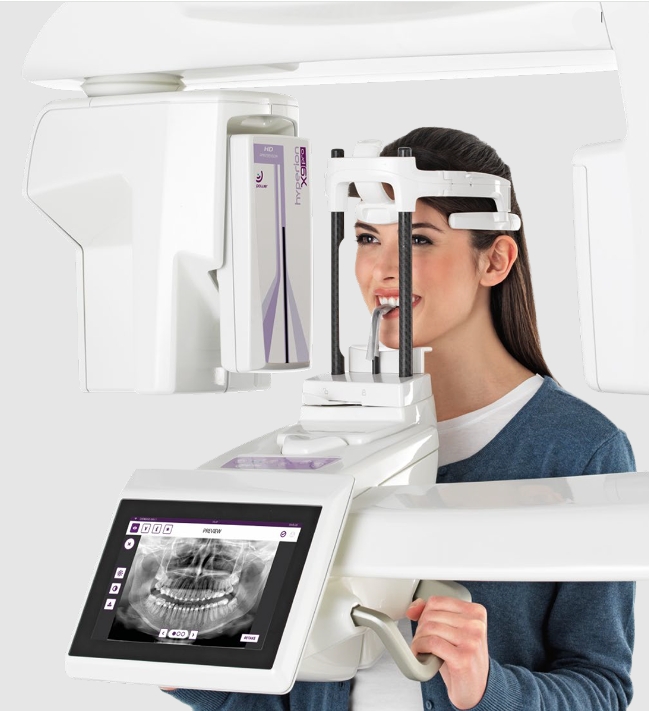
- Company: CT Dent Ltd, Or-Yehuda, Israel (Founded in 1995)
- What Was Done: CT Dent Ltd, operating under the brand name CTdent in Israel, opened its first Dental Imaging center in Holon, Israel, then rapidly expanded, opening 25 centers nationwide to meet the growing demand for high-quality dental imaging. This expansion was fueled by Israel's leading role in dental implant procedures, driving the need for advanced 3D CBCT imaging technology. CTdent's commitment to service excellence, value for money, and state-of-the-art technology set it apart in a highly competitive market.
- Results/Impact: Today, CT Dent serves approximately 3,000 dentists and 400,000 patients in Israel, providing over a million dental imaging scans. This success is a testament to the company's unmatched experience and know-how. Israel's high rate of dental implant procedures and the competitive landscape have significantly influenced CTdent's operations, leading to the development of innovative solutions such as the first-ever dental-PACS and Human+AI Radiology reports. The company's innovative spirit and adaptability have made it a leader in dental imaging, not just in Israel but globally, with expansions into the UK and five additional countries.
- CAD/CAM Technology: Computer-Aided Design and Computer-Aided Manufacturing (CAD/CAM) technology has revolutionized dental restorations, allowing for the design and fabrication of dental restorations in a single visit, reducing the need for multiple appointments and temporary crowns.
- Laser Dentistry: Lasers are used for a variety of dental procedures, including cavity detection, gum disease treatment, and tooth whitening. Laser treatments are often less painful and may reduce healing time.
- Invisalign and Clear Aligners: Innovations in orthodontics, such as Invisalign, have made straightening teeth less visible and more comfortable than traditional braces. These clear aligners are custom-made using 3D printing technology, offering a discreet option for improving dental alignment.
 Case Study: Invisalign: Revolutionizing Orthodontics
Case Study: Invisalign: Revolutionizing Orthodontics- Company: Align Technology, California, USA (Invisalign introduced in 1999)
- What Was Done: Align Technology developed Invisalign, clear aligners as an alternative to metal braces, using 3D printing and proprietary materials.
- Results/Impact: Invisalign has changed the face of orthodontics, offering a discreet and comfortable treatment option and capturing a significant share of the orthodontic market.
- Dental Implants and Bioactive Materials: Advances in materials science have led to the development of dental implants that better integrate with bone, along with bioactive materials that can promote healing and potentially regenerate tissue.
Case Study: Ivory Dentin Graft
- Company: Ivory Graft Ltd. (Established 2013)
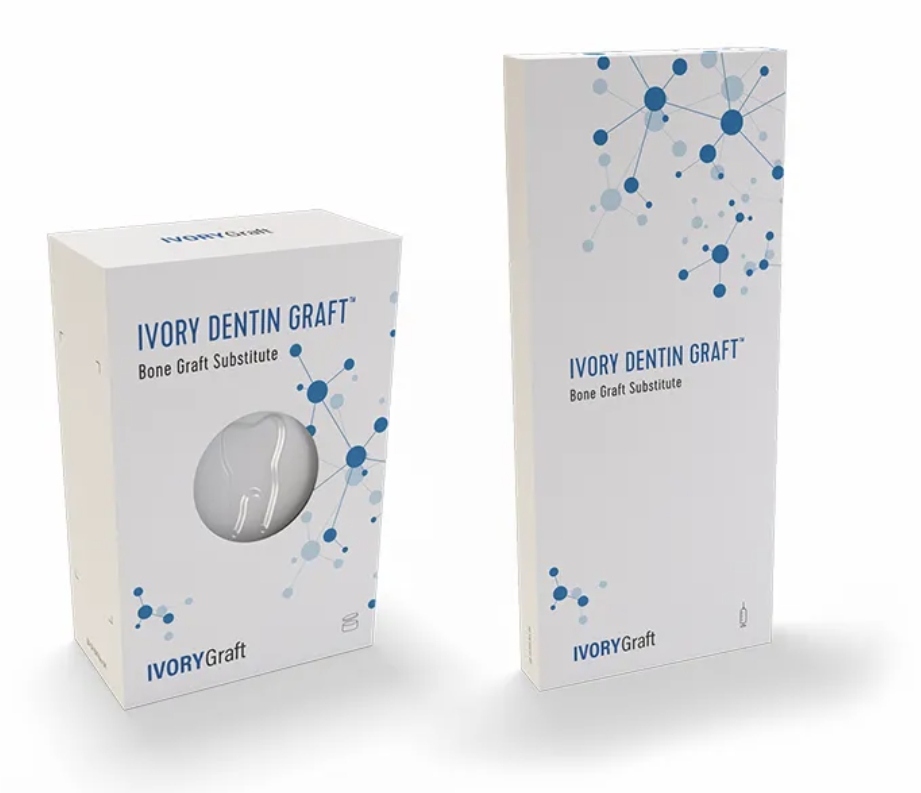
- What Was Done: Ivory Graft Ltd., an Israeli medical device company, focused on addressing the need for safe and efficient bone graft materials in dentistry. The company developed Ivory Dentin Graft™, a novel bone replacement biomaterial derived from porcine teeth. This product leverages the active organic matrix of dentin, allowing for progressive bone graft resorption and enabling guided bone regeneration (GBR) in preparation for dental implant placement. The dentin graft material undergoes a strictly controlled process to ensure safety and retain the natural form and protein matrix crucial for bone regeneration.
- Results/Impact: Clinical trials have demonstrated the superiority of Ivory Dentin Graft™ over traditional bone-derived graft materials. With a statistically significant increase in new bone formation (60.75% vs 42.81%), better bone-graft integration scores, and higher radiodensity of the bone at the graft site, Ivory Dentin Graft™ has proven its efficacy and safety. Titanium implant placement was successful in 95% of patients using the dentin graft material, compared to 81.25% for bone-derived grafts. These results mark Ivory Dentin Graft™ as a pioneering solution in dental bone grafting, making the benefits of dentin grafts accessible to all dentists and patients without the need for a separate surgical site to harvest bone tissue. Ivory Graft Ltd. has set a new standard in dental bone regeneration with the introduction of the first commercially available and CE-approved Dentin Xenograft.
- Company: Ivory Graft Ltd. (Established 2013)
Examples of Innovative Dentistry Practices and Products
- Teledentistry: This emerging field allows for remote dental consultations, expanding access to dental care, especially in underserved areas. It utilizes digital tools to assess patients' oral health remotely, offering convenience and extending the reach of dental professionals.
- Silver Diamine Fluoride (SDF): Approved by the FDA for use in the United States, SDF is a liquid substance used to halt the progression of cavities. It's a minimally invasive and cost-effective treatment that has gained popularity for managing tooth decay, especially in children and the elderly.
Emerging Trends and Future Dentistry Directions
- 3D Printing: Beyond clear aligners, 3D printing is being explored for creating custom dental prosthetics, including crowns, bridges, and even entire teeth, with materials that closely mimic natural tooth structure.
- Artificial Intelligence (AI): AI is beginning to play a role in diagnosing dental conditions from images and radiographs, with the potential to improve accuracy and predictability in treatments.
Case Study: DiagnoCat - Dental Diagnostics with AI
- Company: DiagnoCat, USA and Russia (Launched in 2018)
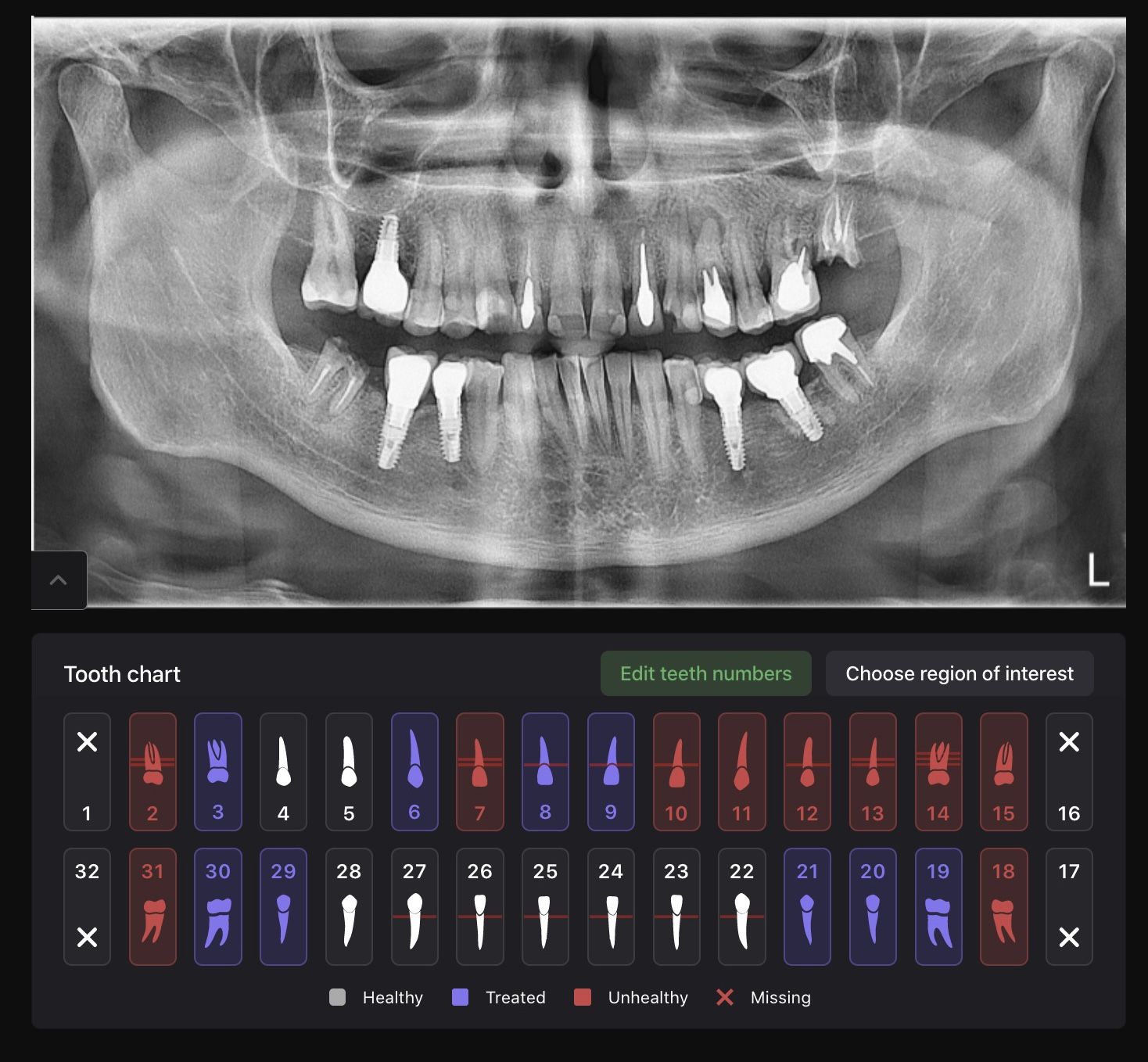
- What Was Done: DiagnoCat introduced a groundbreaking AI-powered dental diagnostic tool designed to revolutionize the way dentists diagnose and plan treatments. Utilizing advanced machine learning algorithms, DiagnoCat analyzes dental X-rays and scans with unprecedented precision and speed. The system identifies a wide range of dental conditions, from cavities and gum disease to more complex issues like bone loss and impacted teeth, significantly improving the diagnostic process.
- Results/Impact: Since its launch, DiagnoCat has received CE and FDA approvals and has transformed dental diagnostics into practices where it has been adopted. Dentists report a significant increase in diagnostic accuracy and efficiency, leading to better patient outcomes and satisfaction, and to 150% growth in clinic revenues. The tool has also enabled practices to manage their workload more effectively, as immediate and accurate diagnostics free up valuable time for patient care. Furthermore, DiagnoCat has empowered dentists to communicate more effectively with their patients by providing visual evidence and explanations of dental issues, thus improving trust and understanding.
- Company: DiagnoCat, USA and Russia (Launched in 2018)
- Regenerative Dentistry: Research into stem cells and growth factors holds the promise of regenerating tooth tissue, potentially revolutionizing the way tooth decay and damage are treated.
The field of dentistry is at an exciting juncture, with technological innovations improving not only the patient’s experience but also the outcomes of dental treatments. As these technologies continue to evolve and become more integrated into practice, the future of dentistry looks to offer even more effective, efficient, and patient-friendly solutions.

Innovations at Aetna
Aetna, a leading health care benefits company, has been at the forefront of innovation within the health insurance industry. Through a blend of technology, data analytics, and customer-focused services, Aetna has consistently aimed to improve health care outcomes, enhance patient experiences, and reduce costs. Their commitment to innovation is evident in several key initiatives and strategies that have set them apart in the competitive health care landscape.
Strategic Innovations by Aetna
- Digital Health Records and Telehealth Services: Aetna has invested in digital platforms that provide patients with easy access to their health records and enable virtual health consultations. This approach not only improves convenience for patients but also facilitates timely medical advice, which is particularly crucial in remote or underserved areas.

- Personalized Health Care Plans: Leveraging big data and analytics, Aetna offers personalized health care plans tailored to individual health profiles and needs. This data-driven approach ensures that members receive the most relevant and effective care, potentially improving health outcomes and member satisfaction.
- Wellness and Preventive Programs: Aetna's focus on preventive care is exemplified in its wellness programs, which encourage healthy lifestyles among its members. Programs like the "Aetna Foundation’s Healthier World Innovation Challenge" support community-based projects aimed at addressing social determinants of health, showcasing Aetna's commitment to holistic health.
- Partnerships for Innovation: Aetna has formed strategic partnerships with tech companies and health care providers to integrate innovative solutions into their services. For instance, their collaboration with Apple led to the development of health apps that sync with the Apple Watch, encouraging physical activity and health monitoring among users.
- Investment in Mental Health Services: Recognizing the critical importance of mental health, Aetna has expanded its services to include digital mental health solutions. These include online counseling and mental health apps, which aim to make mental health support more accessible and reduce the stigma associated with seeking help.
Impact of Aetna's Innovation Efforts
- Improved Patient Engagement: By providing tools and resources that empower patients to take an active role in their health care, Aetna has seen increased engagement and satisfaction among its members.
- Enhanced Health Outcomes: Through personalized care plans and preventive programs, Aetna has contributed to better health outcomes, evidenced by reduced hospital readmissions and improved management of chronic conditions among its members.
- Enhanced Health Outcomes: Through personalized care plans and preventive programs, Aetna has contributed to better health outcomes, evidenced by reduced hospital readmissions and improved management of chronic conditions among its members.
Aetna's commitment to innovation demonstrates how health care companies can leverage technology and data to improve service delivery and health outcomes. As the health care industry continues to evolve, Aetna's forward-thinking strategies position it as a leader in shaping the future of health insurance and care.
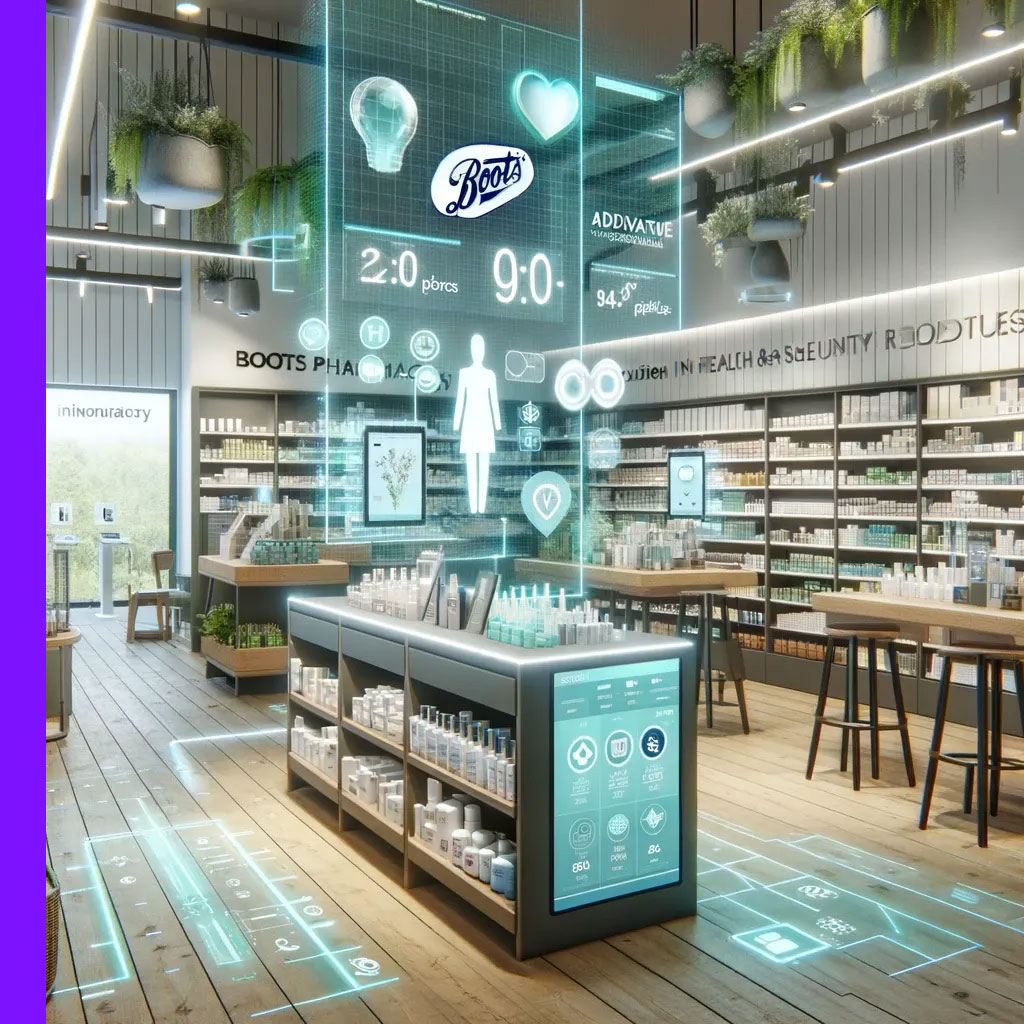
Innovations at Boots
Boots, a leading health and beauty retailer and pharmacy chain in the UK, has a long-standing reputation for innovation in the healthcare and cosmetics industries. With a history that spans over 170 years, Boots has consistently leveraged technology and scientific research to develop products and services that meet the evolving needs of its customers.
Pioneering Health and Beauty Innovations by Boots
- Pharmaceutical Advances: Boots has a rich history of pharmaceutical innovation, including the development of the pain-relieving drug Ibuprofen, which was made available to the public in the 1960s. This breakthrough showcased Boots' commitment to scientific research in healthcare.
 Beauty and Skincare: The Boots No7 brand is renowned for its anti-aging beauty products, developed through rigorous scientific research. One of the brand's most significant innovations was the introduction of the No7 Protect & Perfect Intense Advanced Serum, which became a sensation after independent studies demonstrated its effectiveness in reducing wrinkles.
Beauty and Skincare: The Boots No7 brand is renowned for its anti-aging beauty products, developed through rigorous scientific research. One of the brand's most significant innovations was the introduction of the No7 Protect & Perfect Intense Advanced Serum, which became a sensation after independent studies demonstrated its effectiveness in reducing wrinkles.- Digital Health Services: Embracing the digital transformation, Boots has introduced various online services to improve customer access to healthcare. This includes online pharmacy services, virtual GP consultations, and digital appointment bookings, making healthcare more accessible and convenient for consumers.
- Sustainable Practices: Recognizing the importance of sustainability, Boots has innovated in product packaging and formulations. The company has launched initiatives to reduce plastic use across its product ranges and introduced refill stations in stores for popular products, reducing waste and encouraging reuse among consumers.
- Personalized Healthcare: Boots is at the forefront of offering personalized health and beauty services. This includes in-store skin analysis, bespoke skincare consultations, and personalized medication management services, ensuring that customers receive tailored advice and products suited to their individual needs.
Impact of Boots' Innovation Efforts
- Enhanced Customer Experience: Boots' investment in digital and personalized services has significantly enhanced the shopping and healthcare experience for customers, offering convenience, accessibility, and customization.
- Leadership in Skincare Science: Through its commitment to research and development, Boots has established itself as a leader in anti-aging skincare, with products that are backed by scientific evidence and trusted by consumers worldwide.
- Contribution to Sustainability: Boots' initiatives in reducing plastic waste and promoting refillable products demonstrate the brand's dedication to environmental sustainability, setting a standard for the retail industry.
Boots' approach to innovation exemplifies how a company can evolve with the times while staying true to its core values of customer care, quality, and accessibility. By integrating technology, embracing sustainability, and continuing to invest in health and beauty research, Boots is well-positioned to meet the future needs of its customers, leading the way in the health and beauty retail sector.

Innovations for Kitchen and Bath
The realms of kitchen and bathroom design are witnessing an era of unprecedented innovation, driven by advancements in technology, materials science, and a growing emphasis on sustainability and personalization. These innovations not only aim to enhance functionality and aesthetics but also to create spaces that promote wellness and environmental stewardship.
Transformative Trends in Kitchen and Bath Innovation
- Smart Home Integration: Kitchens and bathrooms are becoming increasingly connected, with smart appliances and fixtures that can be controlled via smartphone or voice commands. Innovations include smart faucets that deliver precise water temperatures and volumes, refrigerators that can track expiry dates and suggest recipes, and mirrors with integrated displays for news and weather updates.
- Sustainable Solutions: Eco-friendly innovations are becoming a priority, with the introduction of water-saving faucets and showers, energy-efficient lighting and appliances, and materials sourced from sustainable or recycled products. Companies are also innovating in composting solutions and waste reduction technologies that can be seamlessly integrated into the kitchen.
Case Study: Nebia - Reinventing the Shower Experience

- Company: Nebia, California, USA (Launched in 2015)
- What Was Done: Nebia developed a water-saving shower system that atomizes water into millions of tiny droplets, significantly reducing water usage without compromising on the shower experience.
- Results/Impact: The innovative shower system has saved over 100 million gallons of water and has received backing from tech industry leaders, marking its success in sustainable product design.
- Advanced Materials: The use of non-porous, durable materials such as quartz and porcelain on countertops and surfaces is on the rise, offering greater resistance to stains, scratches, and bacteria. Additionally, advancements in materials technology have led to the development of self-healing surfaces and tiles that can neutralize pollutants, improving air quality.
- Personalization and Functionality: Modular designs and customizable options allow homeowners to tailor spaces to their specific needs and preferences. Innovations include adjustable shelving and cabinetry, movable islands, and retractable appliances and fixtures that maximize space efficiency and adaptability.
- Wellness and Comfort: With an increased focus on wellness, innovations in kitchen and bath design include chromotherapy lighting, spa-like bathtubs and showers with multiple therapeutic settings, and ventilation systems that ensure optimal air quality, transforming these spaces into havens for relaxation and rejuvenation.
Examples of Cutting-Edge Products
- Touchless and Smart Faucets: Faucets equipped with motion sensors or touchless technology to reduce water wastage and enhance hygiene, some even offering voice-activated controls for temperature and flow adjustments.
- Smart Ovens and Cooktops: Appliances that can be preheated remotely, feature built-in cameras for monitoring cooking progress, and provide recipe suggestions and adjustments based on the ingredients on hand.
- Intelligent Toilets: High-tech toilets with features such as bidet functions, seat warmers, automatic lids, and self-cleaning technologies, offering unparalleled comfort and cleanliness.
The kitchen and bath industry's focus on innovation reflects a broader shift towards creating more intelligent, sustainable, and personalized living spaces. As technology and consumer expectations continue to evolve, the future of kitchen and bath design promises even more exciting advancements that will redefine our daily routines and interactions within these essential spaces.

Innovation Week
Innovation Week is an annual event celebrated in various organizations, cities, and regions around the world to showcase the latest advancements, foster collaboration, and inspire creativity among stakeholders from diverse backgrounds. This week-long celebration often features a series of events, workshops, exhibitions, and networking opportunities designed to highlight innovative solutions, share best practices, and catalyze new ideas.
Key Components of Innovation Week
- Conference and Keynote Speakers: Innovation Week typically kicks off with a conference featuring keynote speakers from industry leaders, academia, and government agencies. These speakers share insights, trends, and success stories related to innovation, setting the tone for the rest of the week.
- Exhibitions and Demonstrations: Innovation fairs and exhibitions provide a platform for companies, startups, research institutions, and entrepreneurs to showcase their latest products, technologies, and services. Attendees have the opportunity to interact with innovators, explore cutting-edge solutions, and gain inspiration for their own projects.
- Workshops and Hackathons: Hands-on workshops and hackathons are a popular feature of Innovation Week, allowing participants to collaborate on real-world challenges, experiment with new tools and methodologies, and develop innovative prototypes or solutions within a short timeframe. These events encourage interdisciplinary collaboration and rapid ideation.
Case Study: Adobe's Kickbox: Fostering Internal Innovation
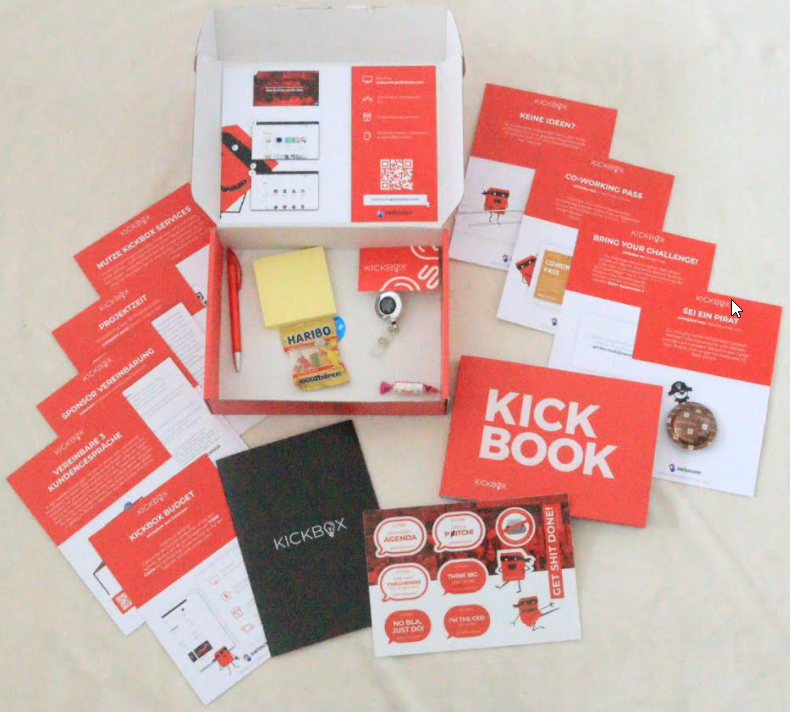
- Company: Adobe, California, USA (Kickbox launched in 2013)
- What Was Done: Adobe developed an internal program called Kickbox that gives employees a box with tools, resources, and funding to develop their own innovative ideas.
- Results/Impact: Kickbox has led to the development of new products and features for Adobe, empowering employees to be change-makers and fostering a culture of innovation.
- Networking Events: Innovation Week offers numerous networking opportunities, including meet-and-greet sessions, networking lunches, and cocktail receptions. Participants can connect with like-minded individuals, potential collaborators, investors, and mentors, fostering valuable relationships and partnerships.
Case Study: Startup Week at TechStars
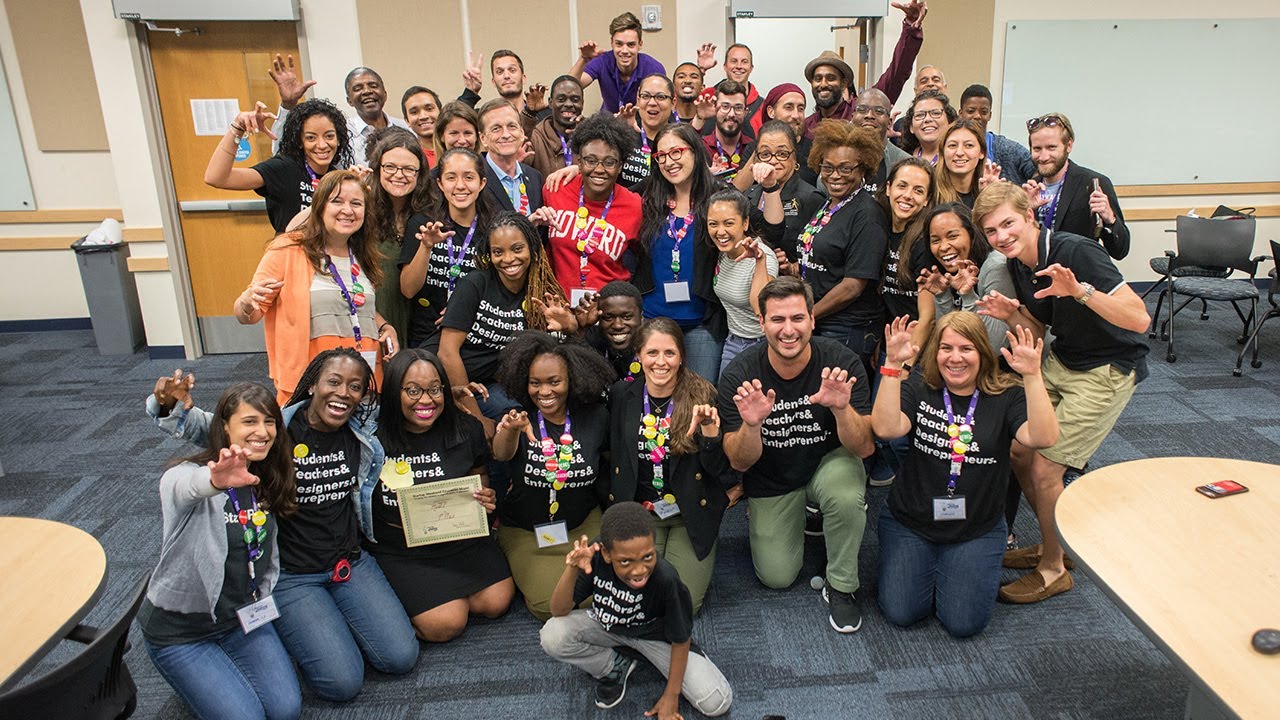
- Company: Techstars Startup Week, Global (Annual events)
- What Was Done: Techstars Startup Week is a week-long celebration of entrepreneurship with local events that bring entrepreneurs, local leaders, and friends together to build momentum and opportunity.
- Results/Impact: Startup Week has engaged thousands of entrepreneurs globally, providing them with networking, learning, and partnership opportunities and contributing to vibrant entrepreneurial ecosystems.
- Pitch Competitions and Awards: Pitch competitions and innovation awards recognize outstanding achievements in various categories, such as technology, social impact, sustainability, and entrepreneurship. These competitions provide a platform for innovators to gain visibility, receive feedback, and secure funding or support for their projects.

Examples of Innovation Week Initiatives
- London Tech Week: London Tech Week is one of the largest technology festivals in Europe, featuring conferences, exhibitions, workshops, and networking events focused on innovation and digital transformation across industries.
- SXSW Interactive Festival: The SXSW Interactive Festival, part of the broader South by Southwest (SXSW) conference and festival in Austin, Texas, showcases emerging technology, creative startups, and groundbreaking ideas through panel discussions, exhibitions, and networking sessions.
- Singapore Innovation Week: Singapore Innovation Week brings together entrepreneurs, researchers, policymakers, and investors to explore opportunities and challenges in innovation and technology-driven growth. The event includes conferences, workshops, innovation labs, and startup showcases.
Impact and Future Outlook
Innovation Week serves as a catalyst for collaboration, knowledge sharing, and ecosystem building, driving economic growth, job creation, and societal progress. As the global innovation landscape continues to evolve, Innovation Week initiatives play a crucial role in fostering creativity, resilience, and adaptability in the face of complex challenges and opportunities. Looking ahead, Innovation Week is expected to expand its reach, embrace emerging technologies, and promote inclusive innovation ecosystems that benefit people and planet alike.
Systematic innovation
Interested in getting help with systematic innovation processes and developing new products and services?
Contact us: [email protected] ,+972-9-958-5085
Innovation Articles
- Innovation - overview
- Innovation management and process
- Innovation tools and methods
- Innovation and other disciplines
- Innovation in organizations
- Innovation importance and goals
- Innovation values and inspiration
- Innovation education and career
- Product and service innovation
- Technological innovation
- Innovation examples
- Innovation terms (glossary)





